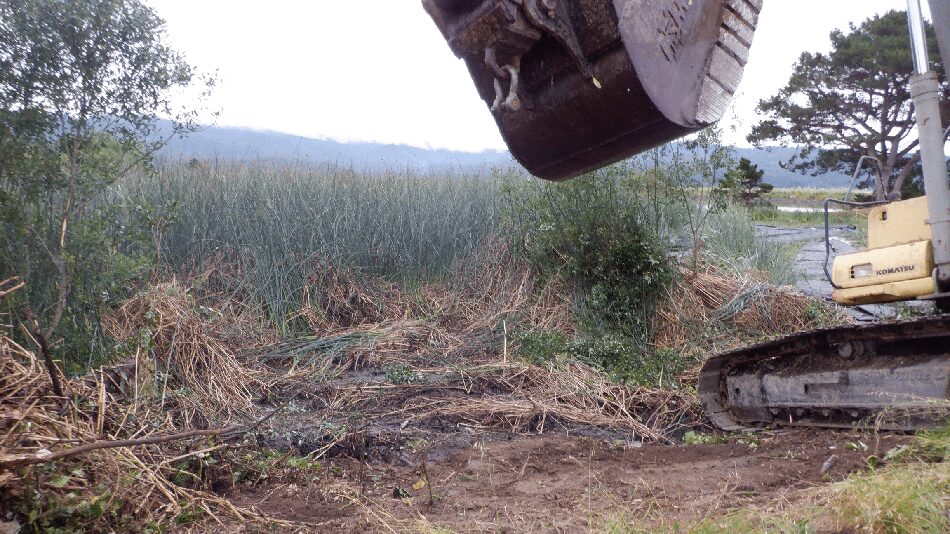
An excavator prepped the starting bank before placing the 5ft tall, 11ft wide, 280ft long single closed end (SCE) AquaDam®. For successful installation, the starting bank must be high enough to keep the SCE AquaDam®'s open end and fill tubes above its full height along its path. This ensures proper filling and prevents premature discharge. The AquaDam® reaches its max height only at the lowest point, where pressure is greatest.
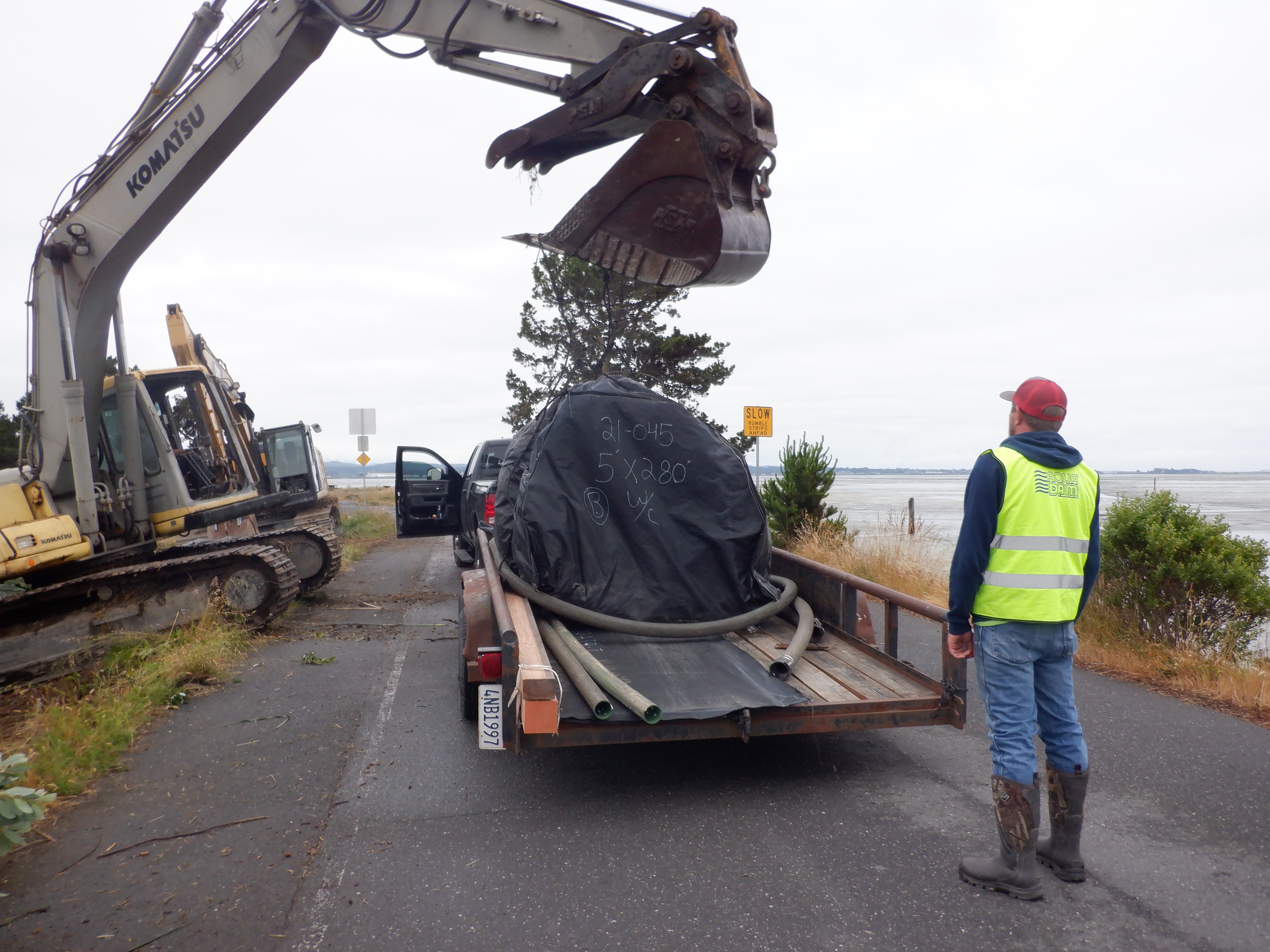
The 5ft tall SCE AquaDam® arrived on-site transported by trailer. AquaDams® are shipped rolled up like a carpet on a wooden beam, securely wrapped in a protective covering and equipped with lifting ropes for handling. To offload the unit, workers inserted the pre-attached rope loops into the teeth of the excavator bucket, allowing the dam to be safely lifted from the trailer
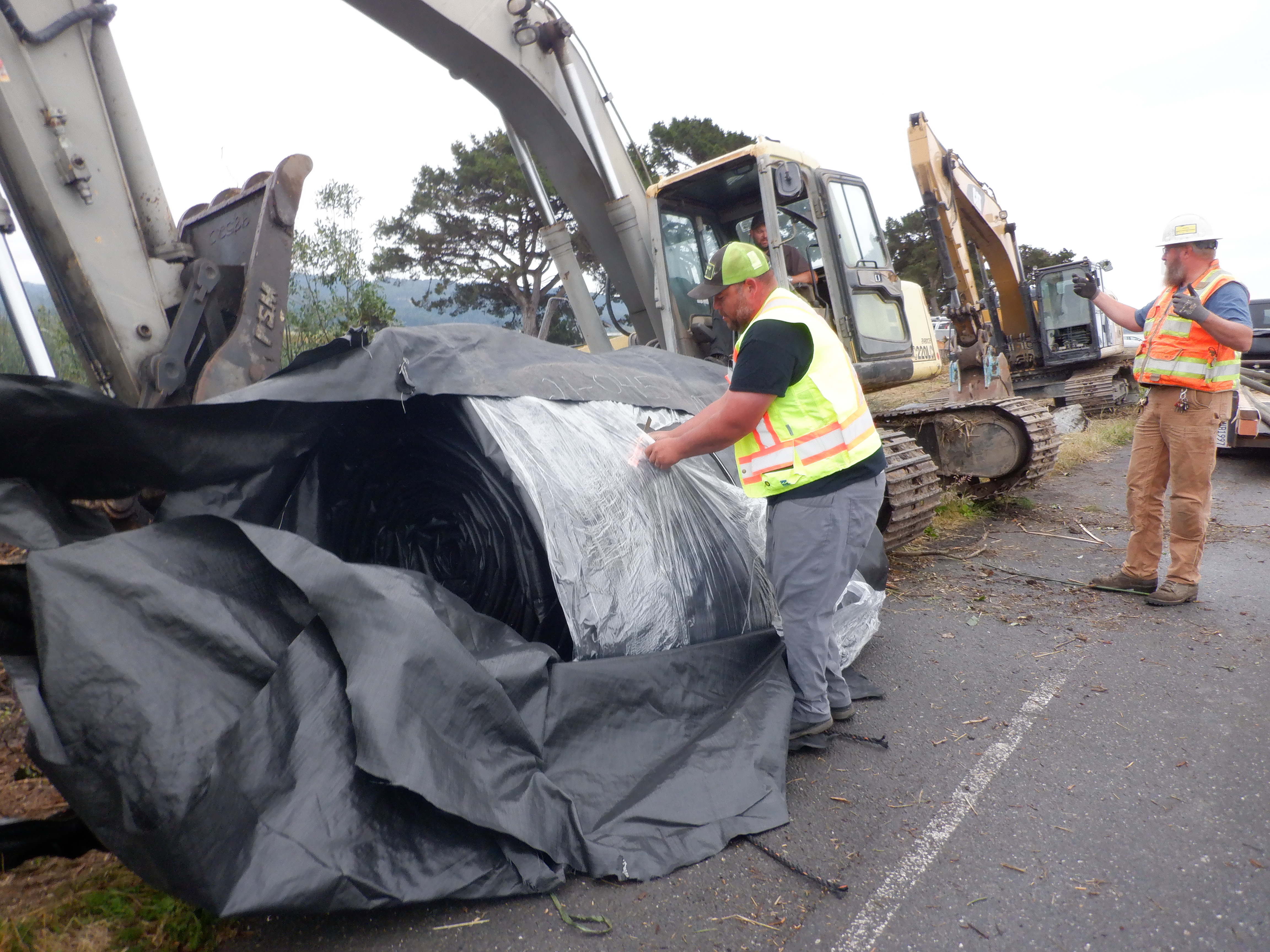
Once positioned at the starting bank, workers removed the lifting ropes and protective wrapping from the SCE AquaDam®.
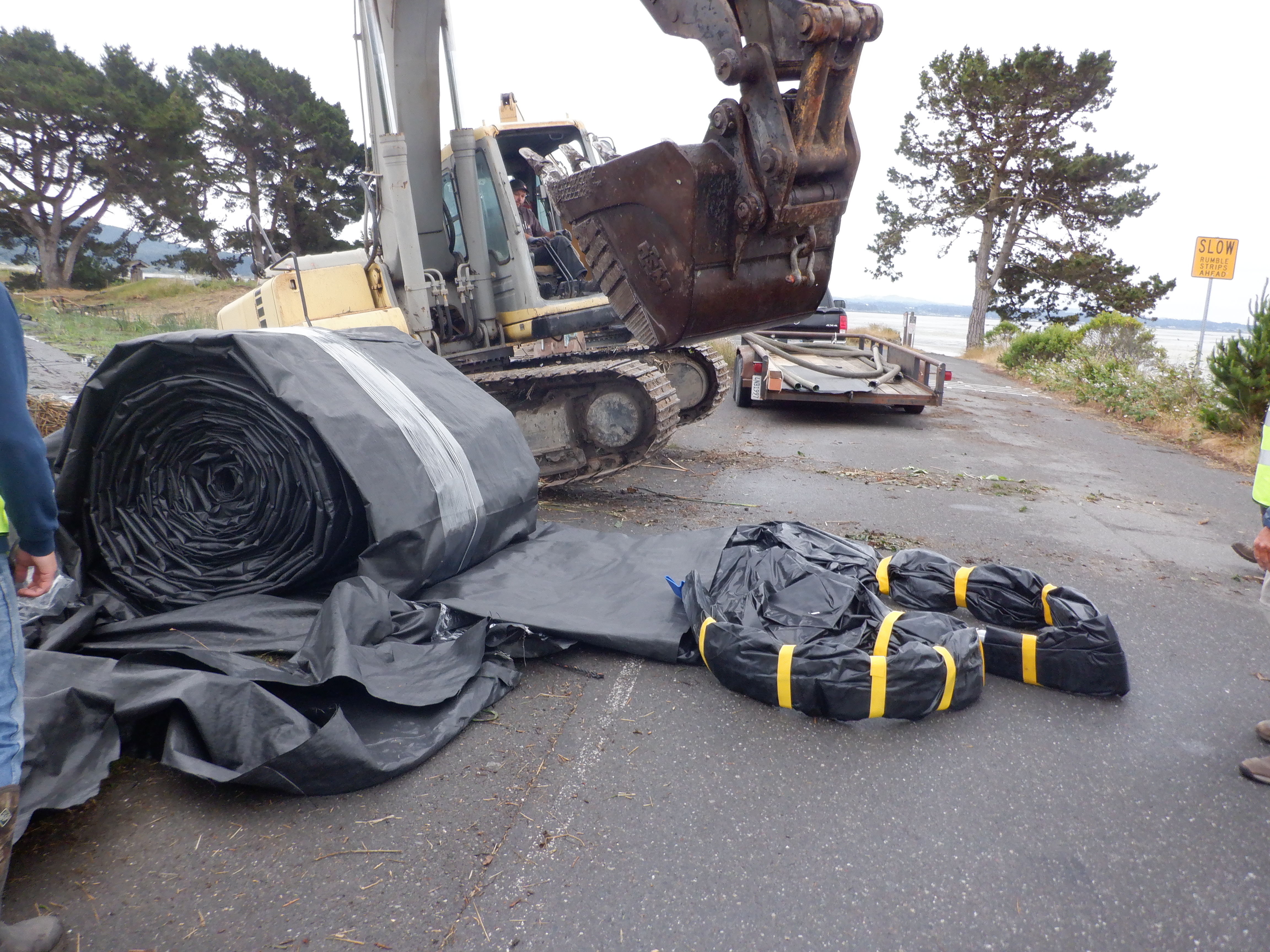
Workers unrolled the fill-tubes from the AquaDam® and laid them out on the ground. The fill-tubes, secured with yellow Velcro straps, are visible on the right side of the setup. To prevent movement during the filling process, the open end of the AquaDam® was tied back, ensuring it remained securely in place on the starting bank.
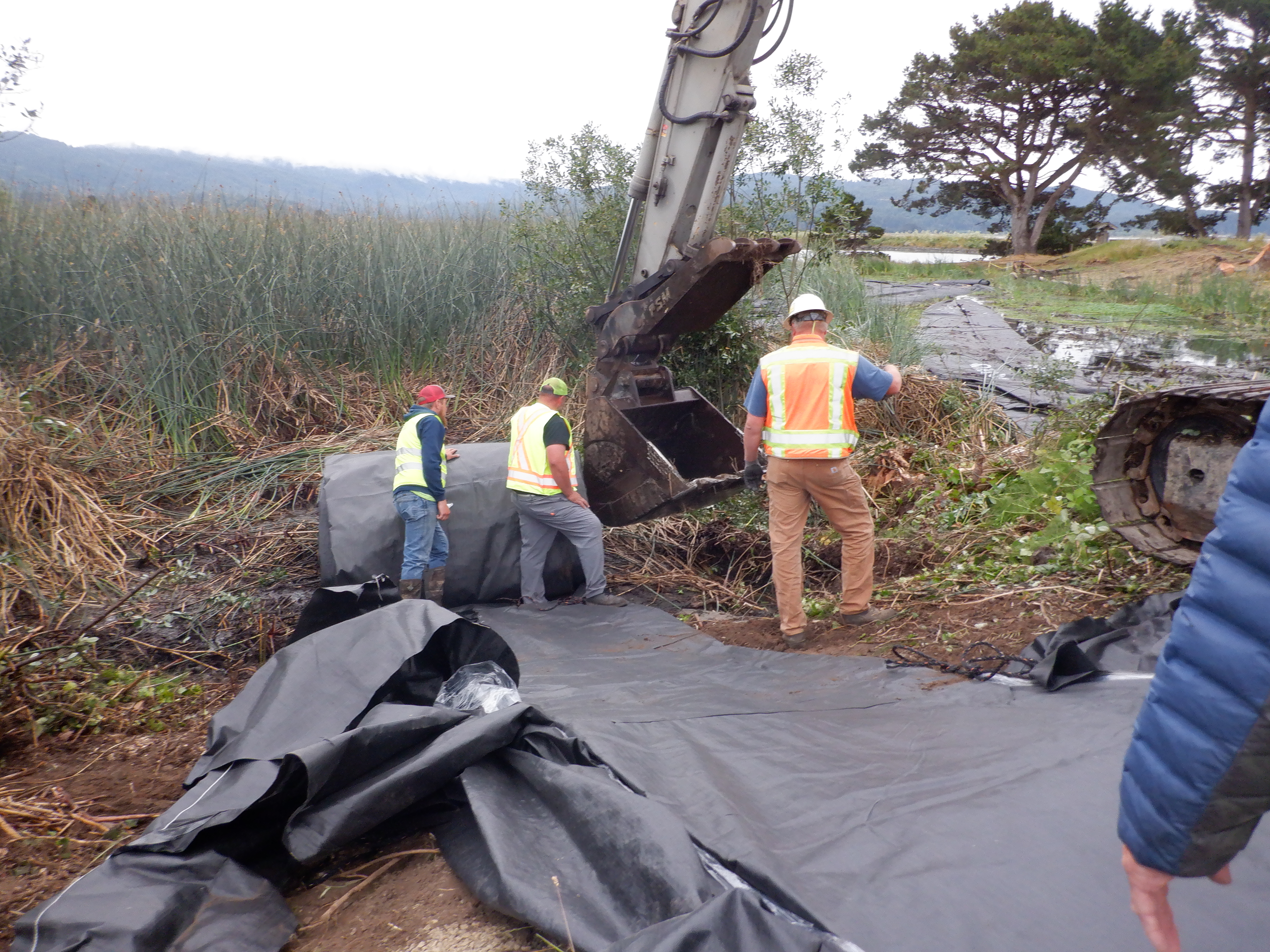
The AquaDam® roll was carefully guided down the bank and positioned into the water, initiating the deployment process.
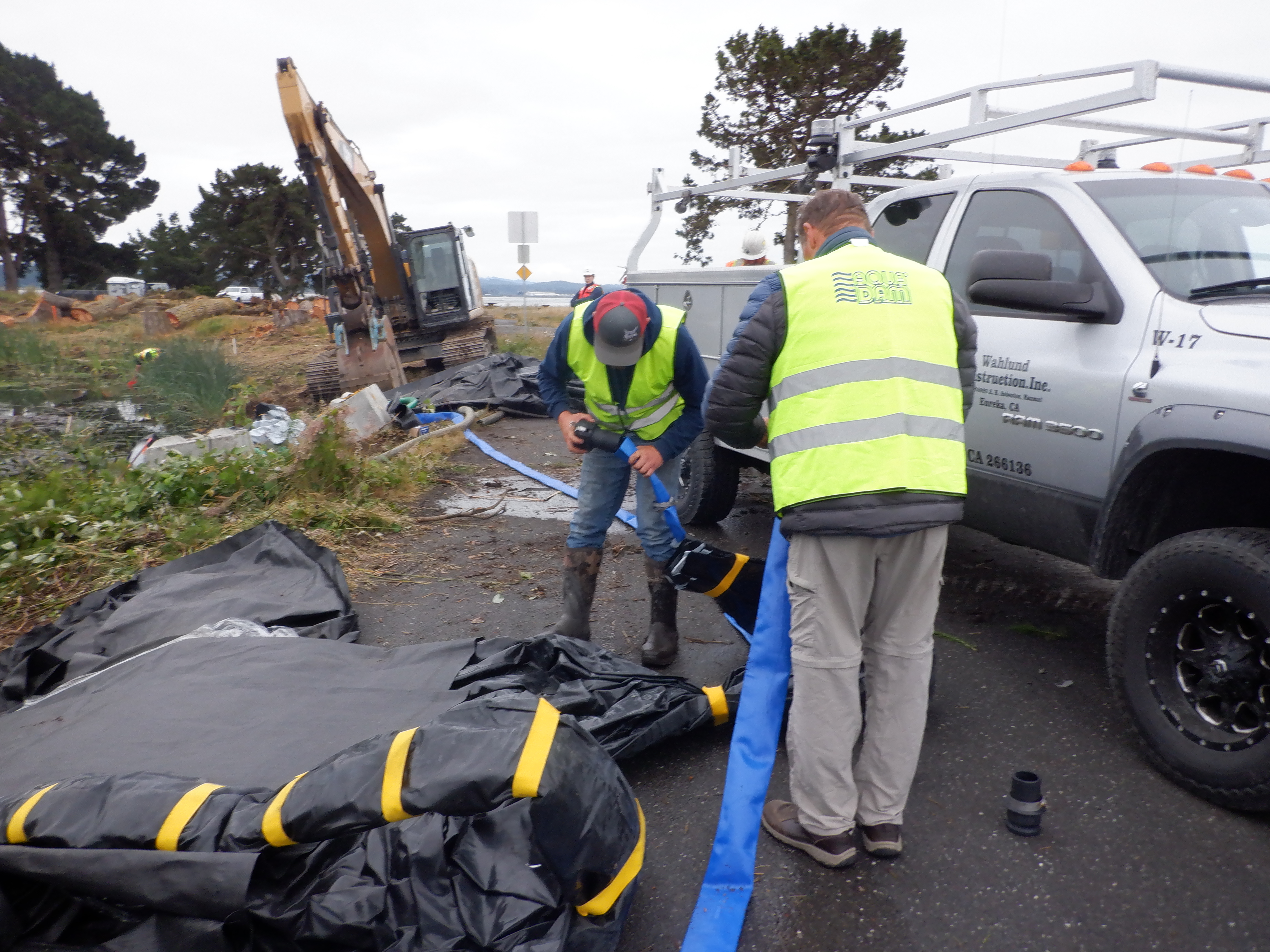
Workers attached fittings to the blue discharge hoses, which had been pre-inserted into the fill-tubes.
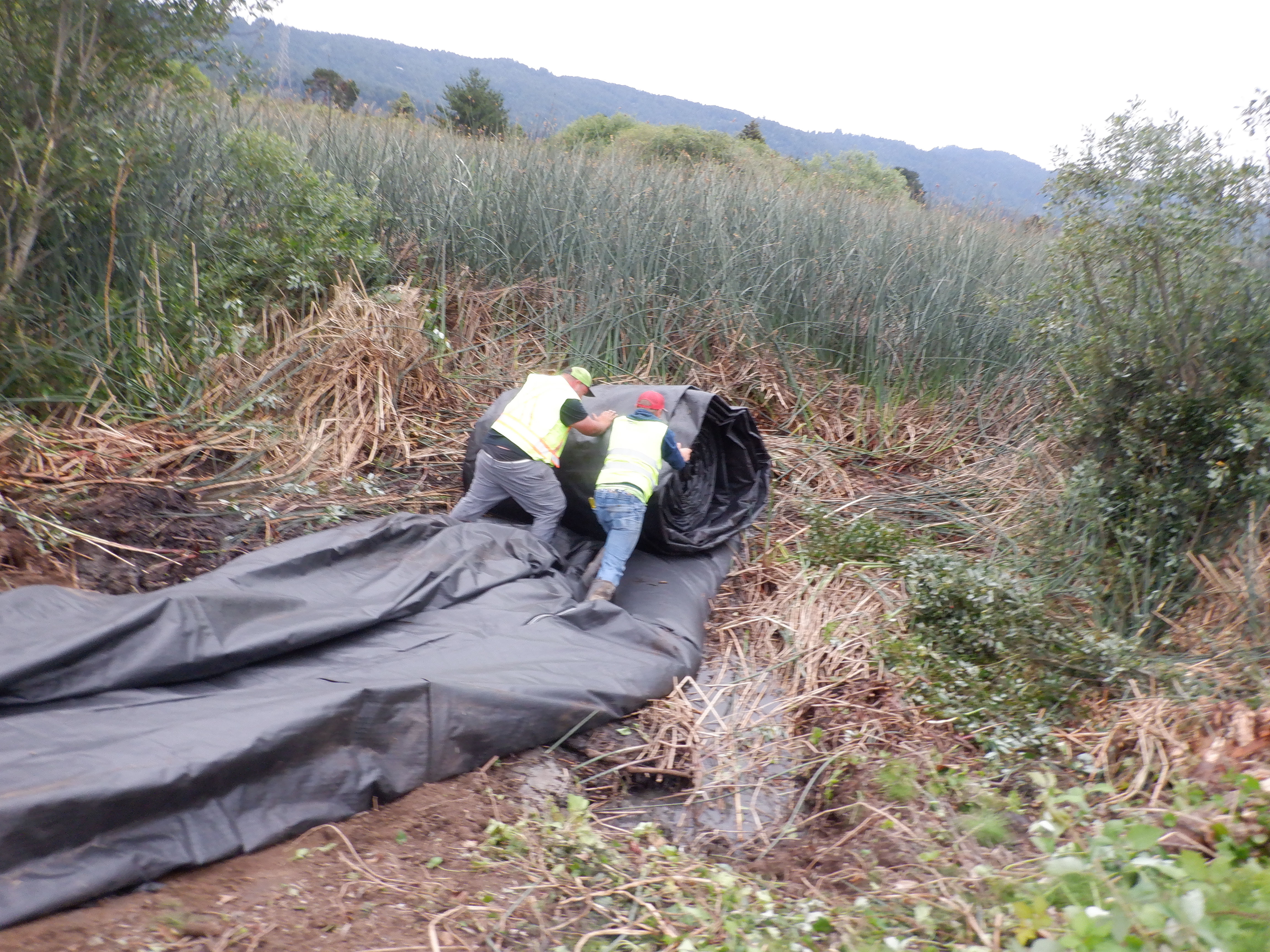
Typically, as water is pumped into an AquaDam®, hydrostatic pressure causes the roll to unroll naturally. However, in this case, dense tule vegetation obstructed movement, requiring manual assistance to help the AquaDam® deploy properly.
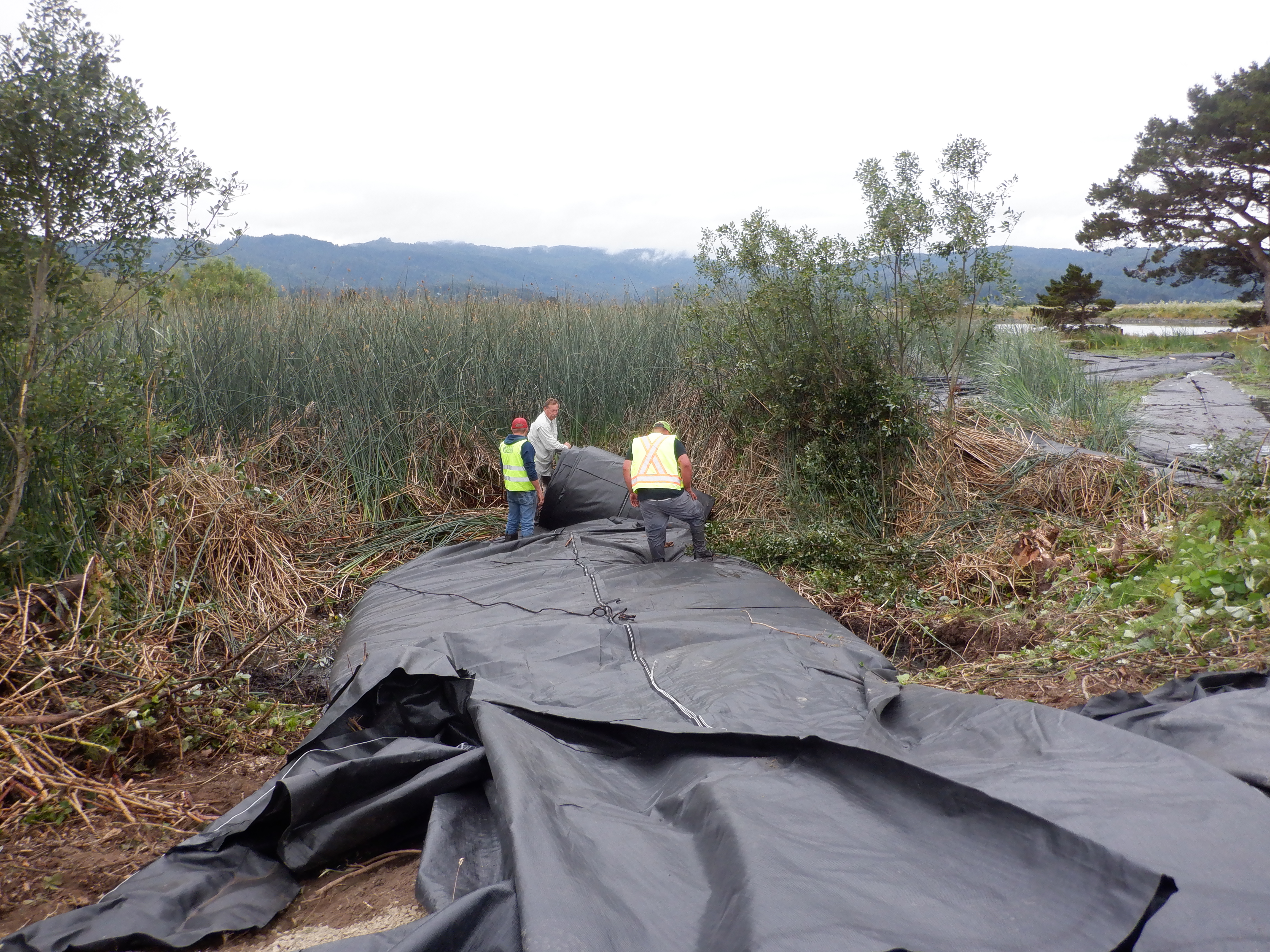
As the 5-foot-tall SCE AquaDam® fills with water, workers actively guide and control the roll to ensure it deploys along the intended alignment.
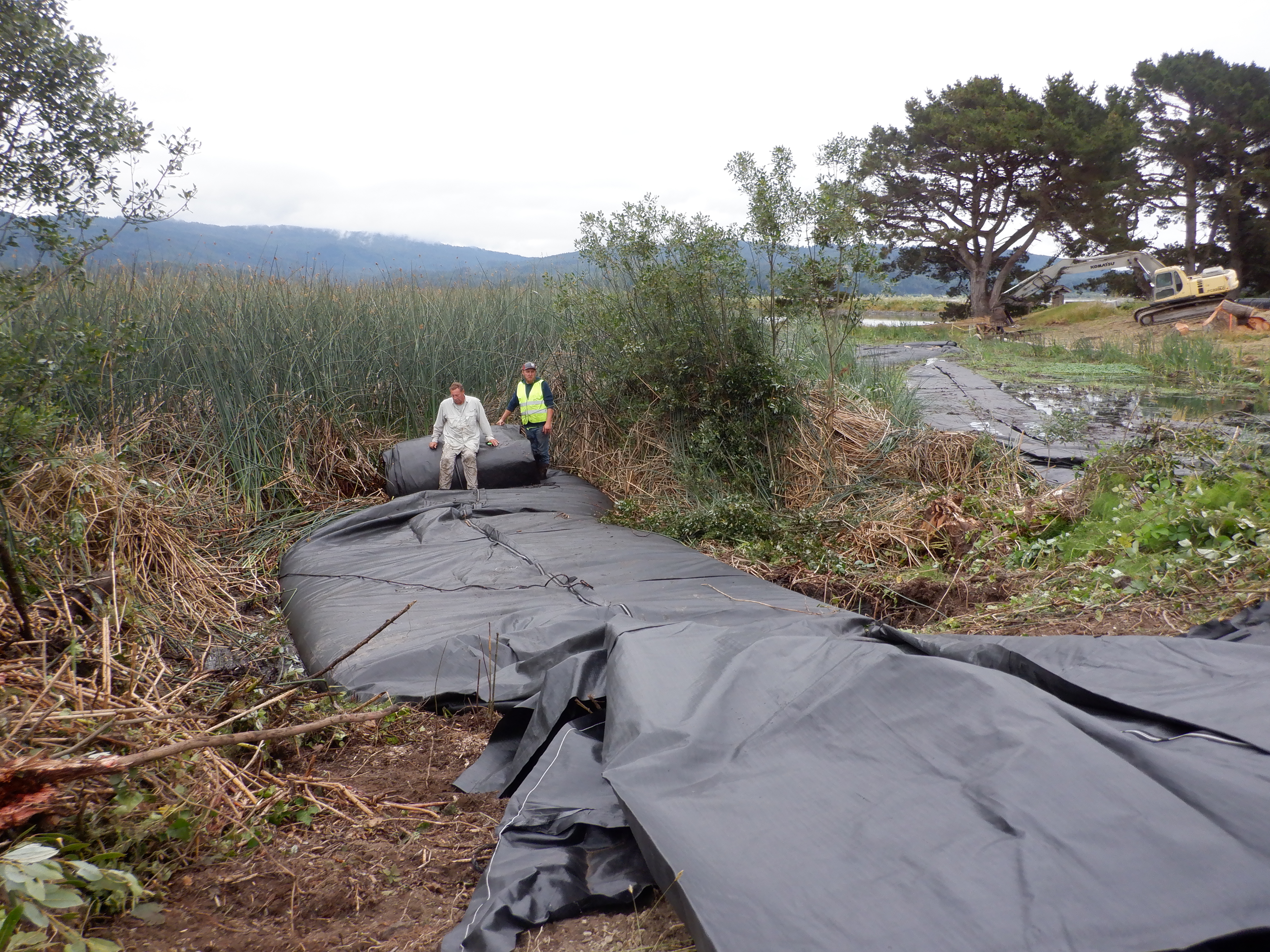
Once sufficient internal water pressure (head) builds within the AquaDam®, workers resume pushing and guiding the roll to maneuver it along the desired path.
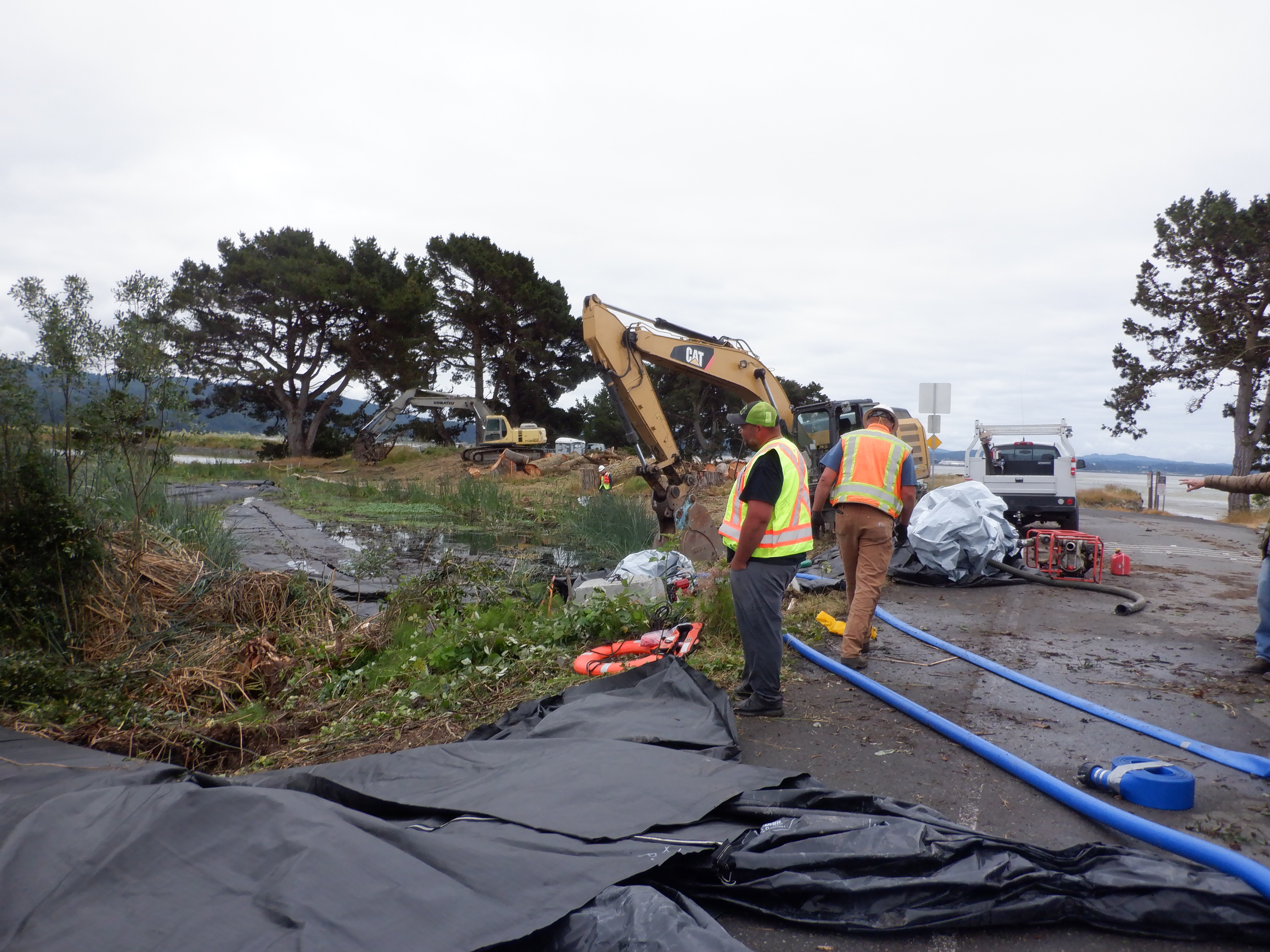
To expedite filling, workers pumped water from the two previously deployed AquaDams into this unit. Water trucks also supplemented the filling process.
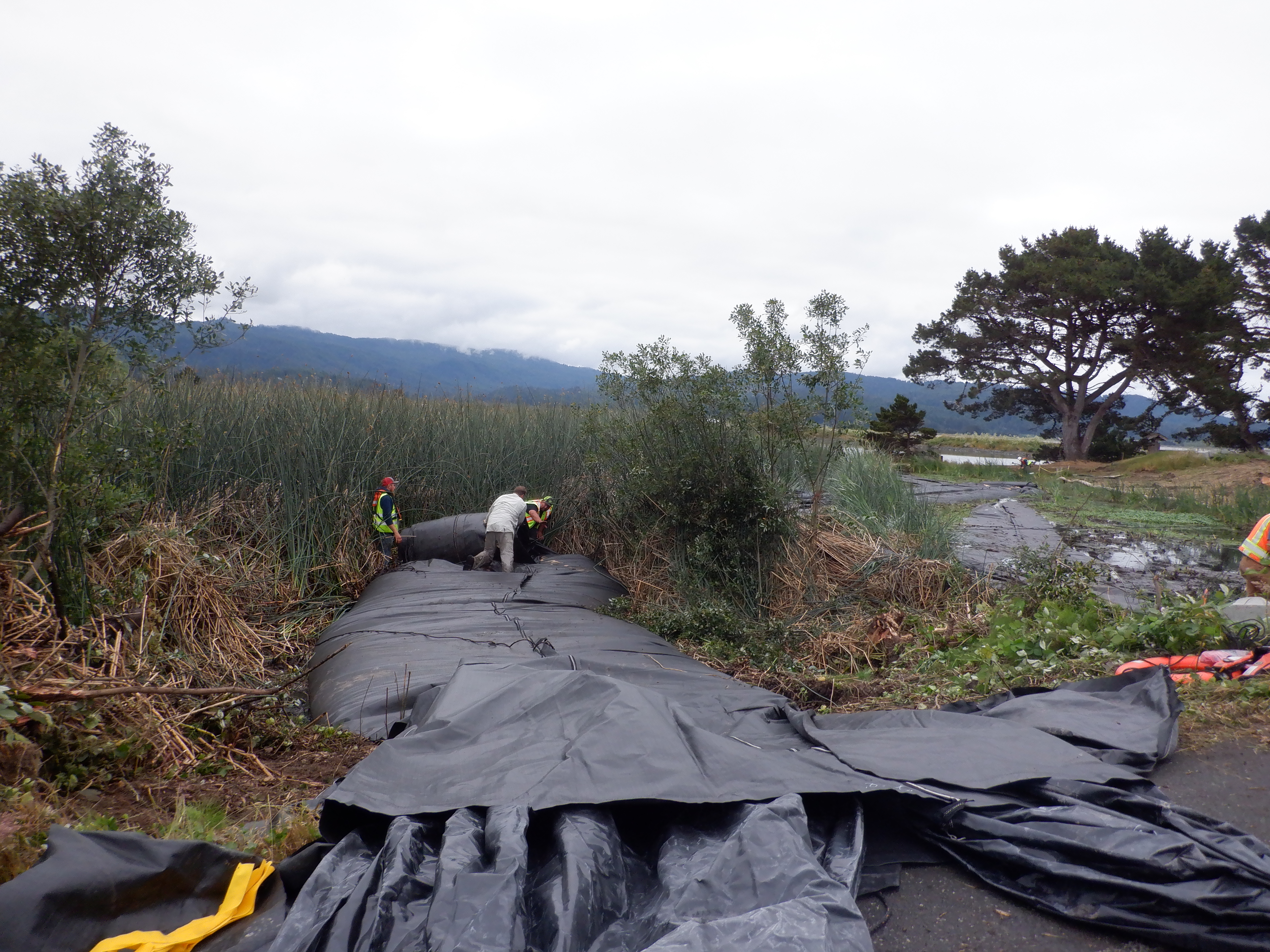
Before pushing the roll over the dense tule vegetation, workers positioned themselves ahead of the AquaDam® to manually compress the tules, facilitating smoother deployment.
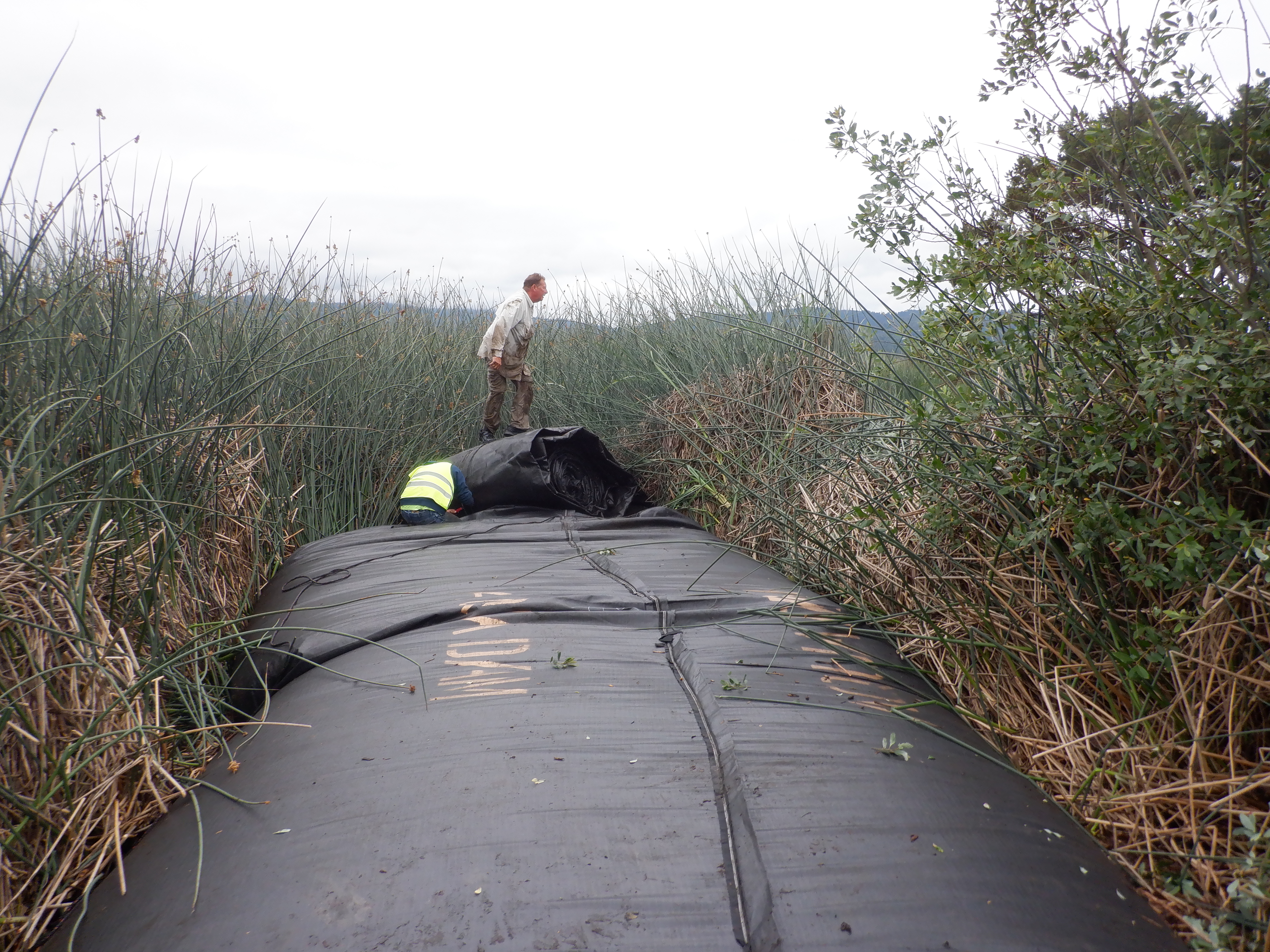
Physically pushing the roll over the dense tules was a labor-intensive and time-consuming task; therefore, workers incorporated an excavator to assist and streamline the deployment process.
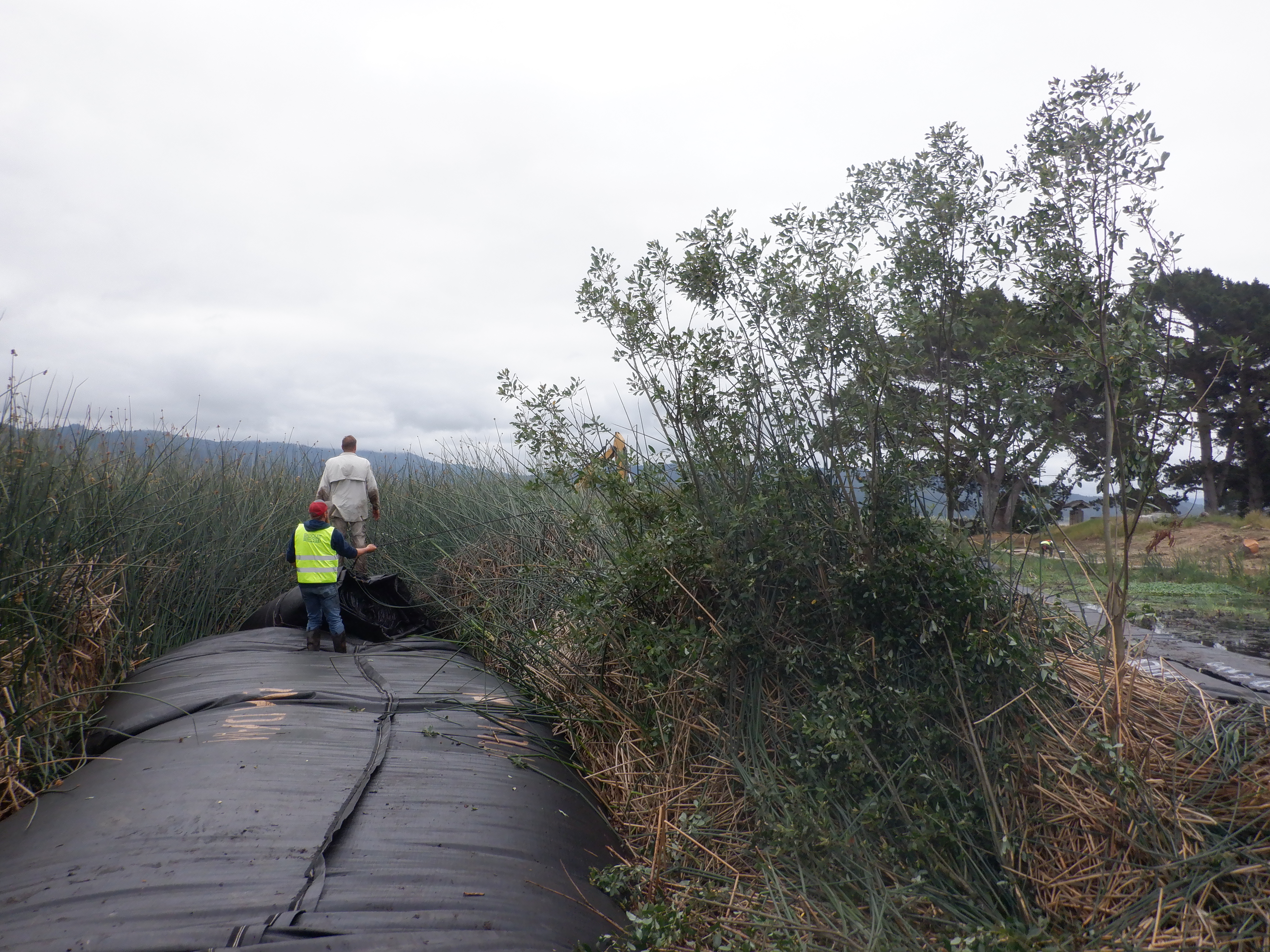
To guide the AquaDam roll to its precise location, a roughly 200-foot length of rope was run to an excavator positioned on the opposite bank. The rope was then secured to both the roll and the excavator's bucket, allowing the machinery to pull the roll into the desired position.
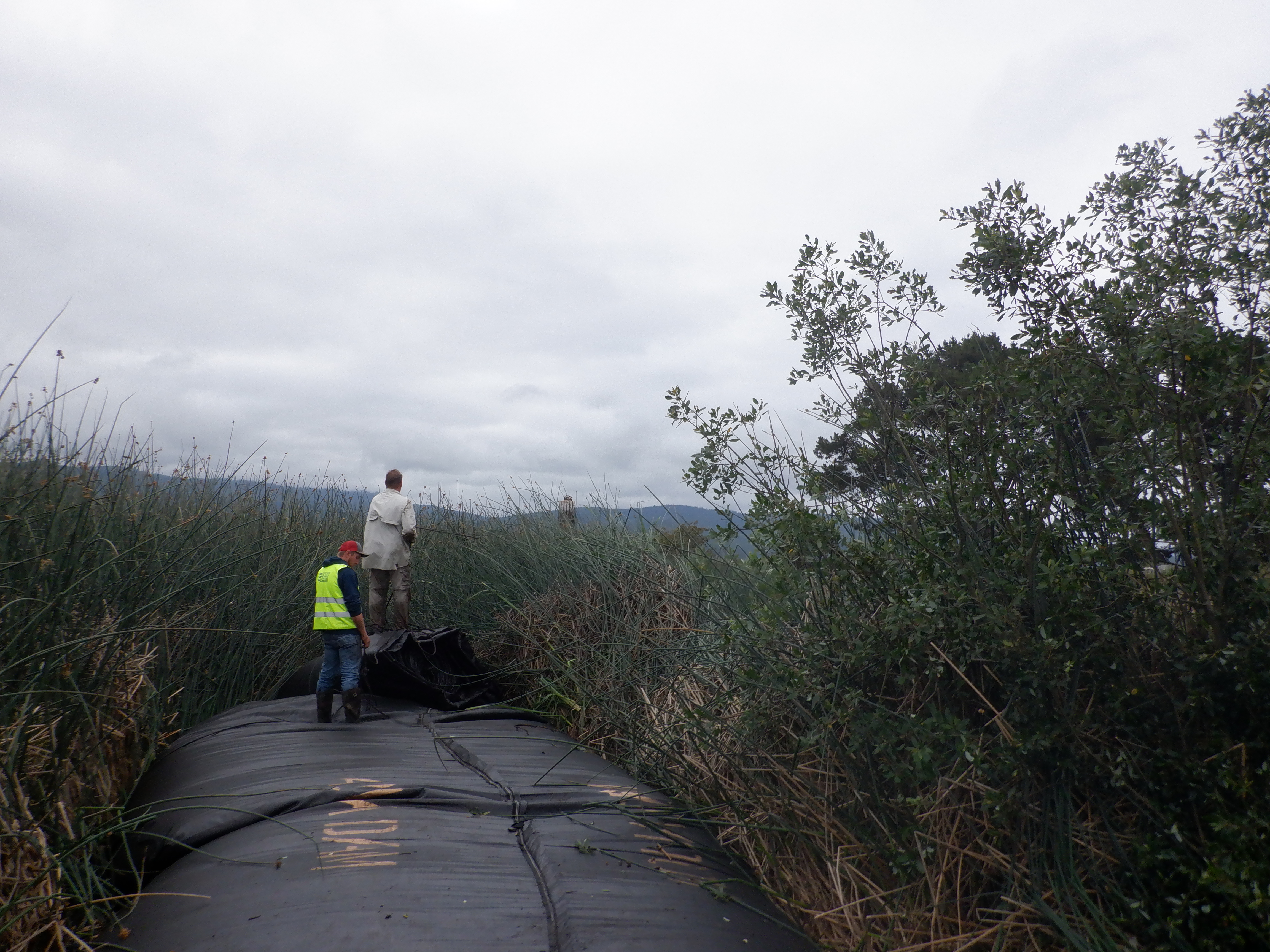
Before securing the rope, it was carefully pulled over the dense tule vegetation to ensure a clear and unobstructed line.
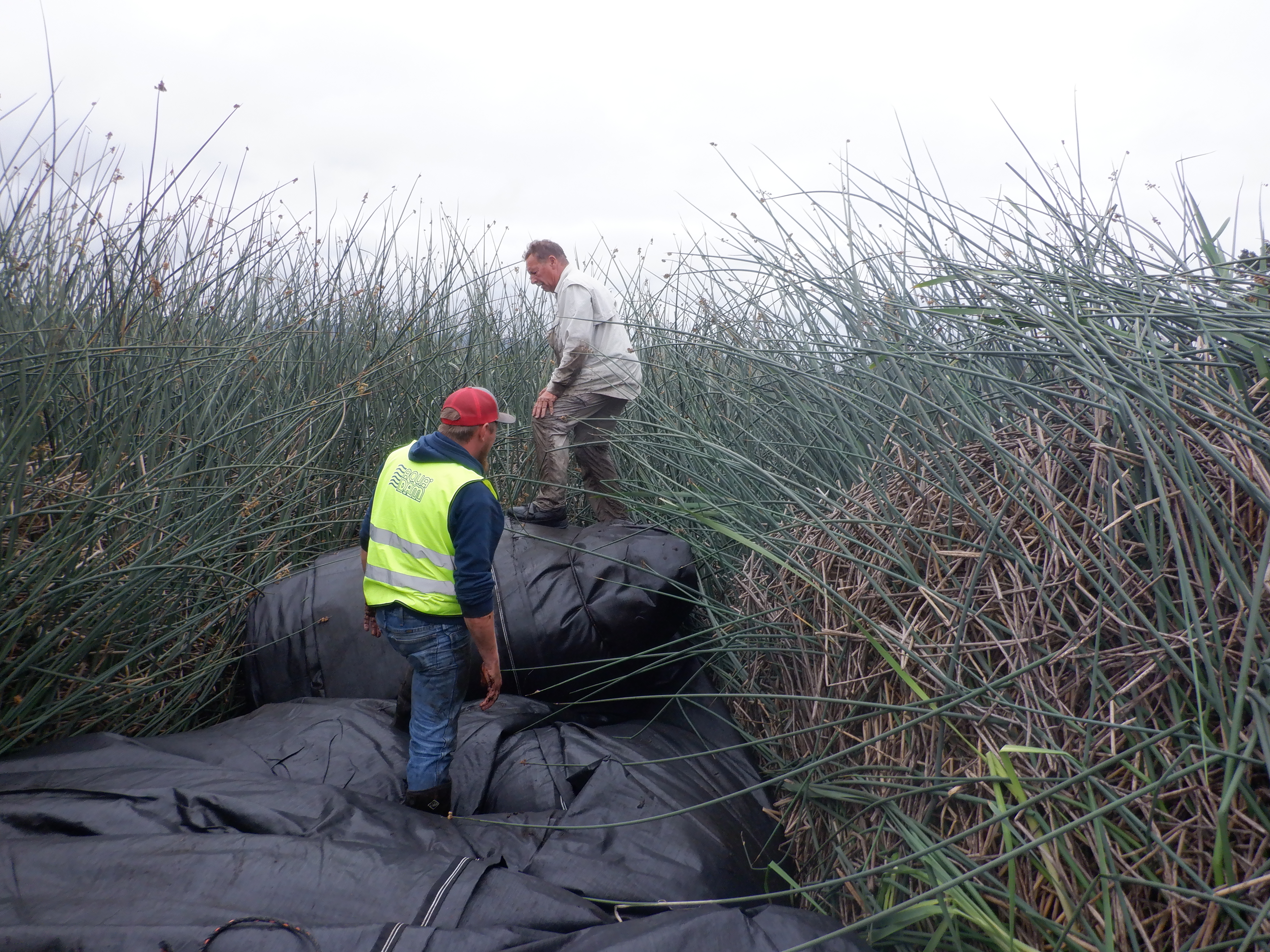
After securing the rope to both the roll and the excavator bucket, workers coordinated the unrolling process using hand signals to ensure precise communication.
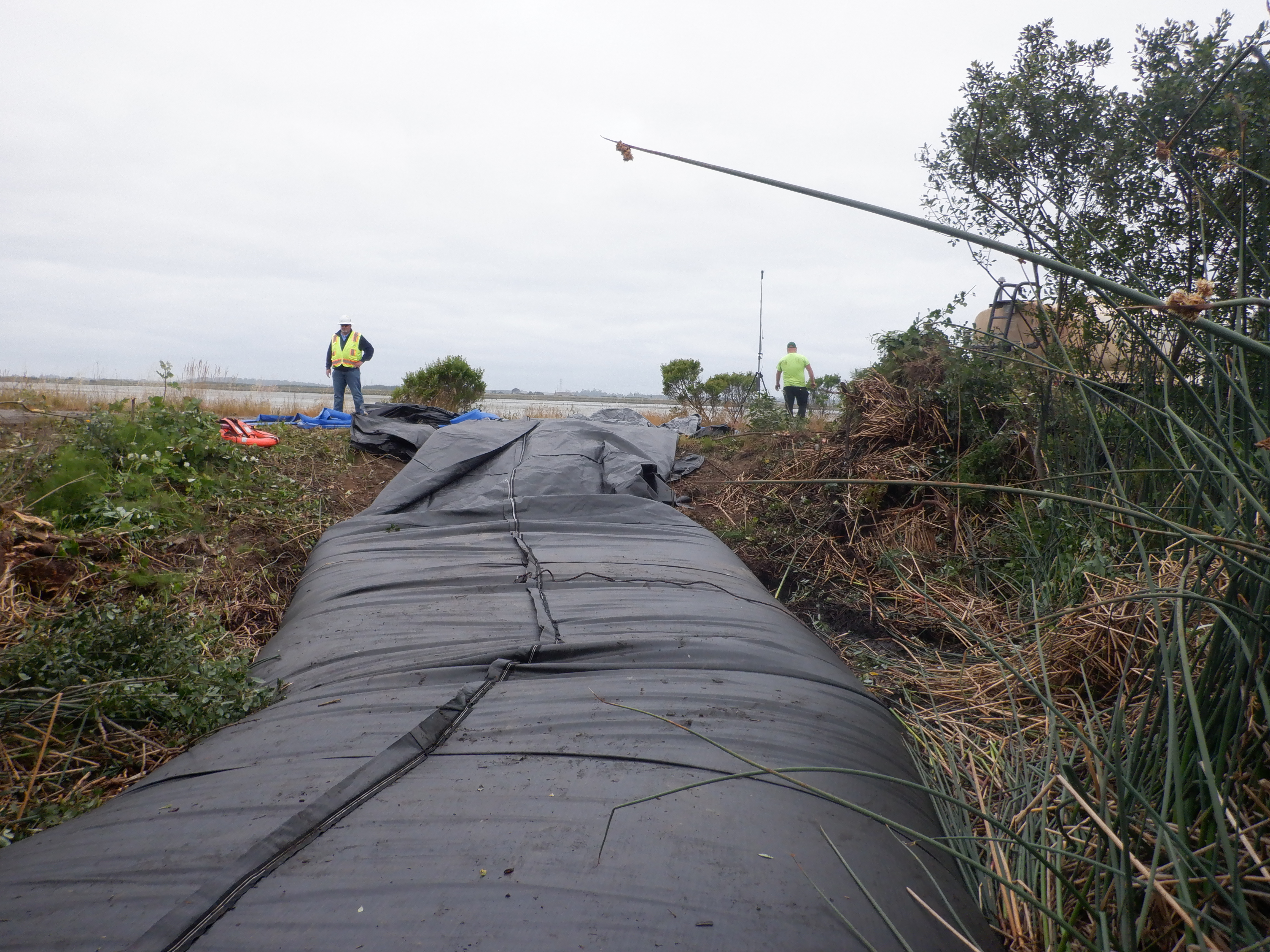
A view looking back at the starting bank for the 5ft tall SCE AquaDam® as it is installed.
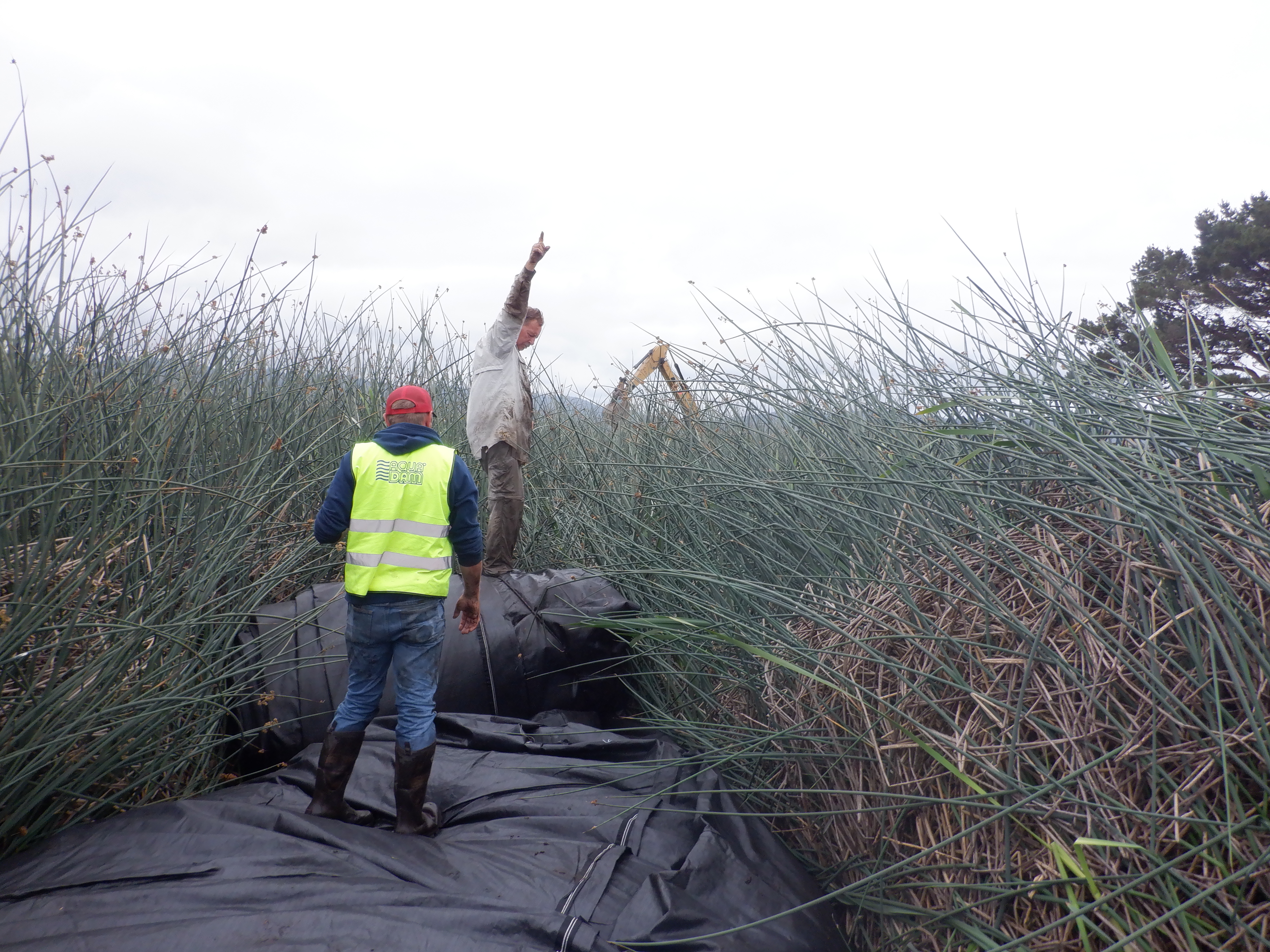
The excavator was operated with slow and controlled movements to prevent any damage to the rope or the AquaDam® material.
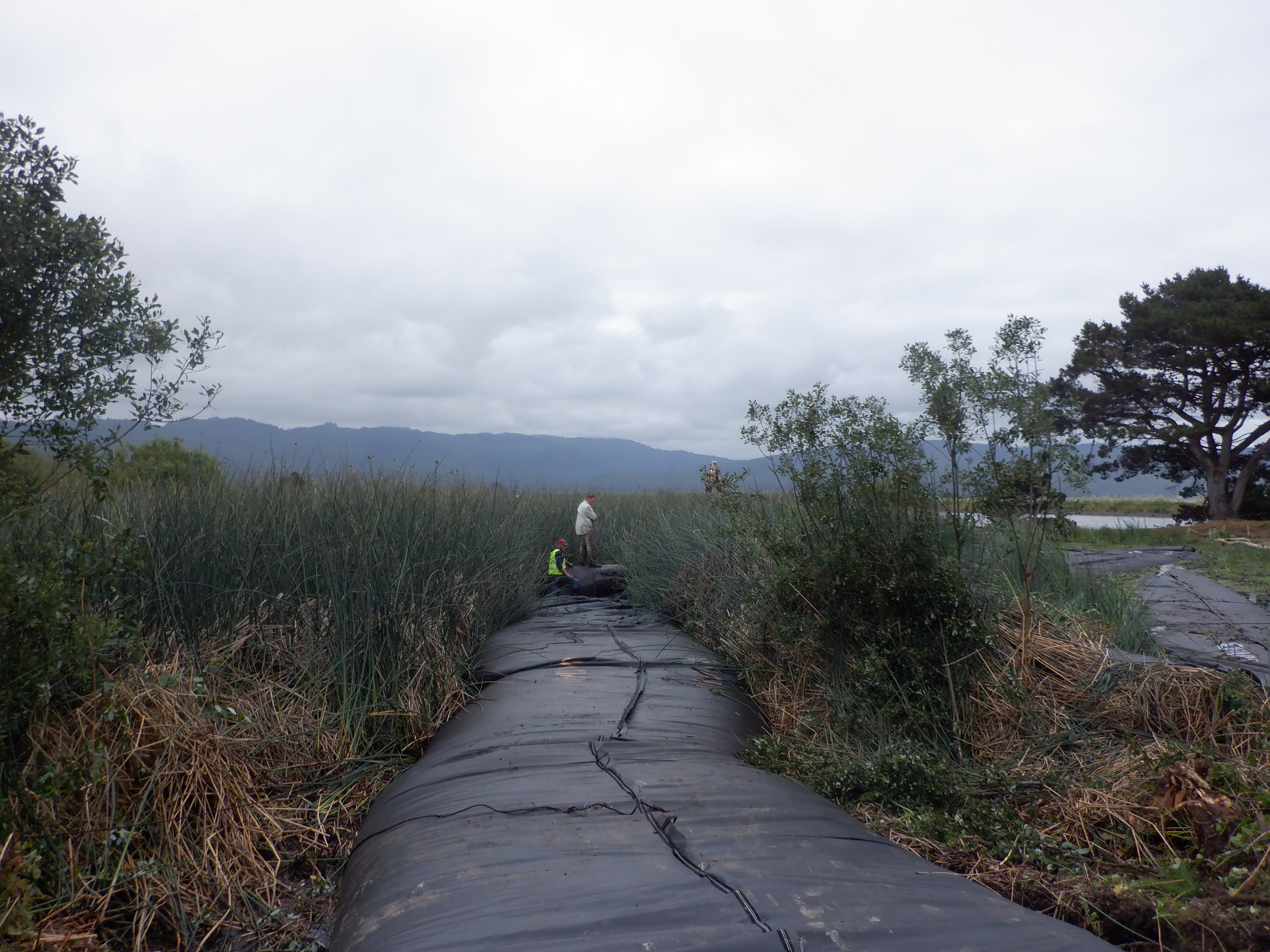
Now that the excavator is controlling the AquaDam roll, less internal pressure is required within the dam's body.
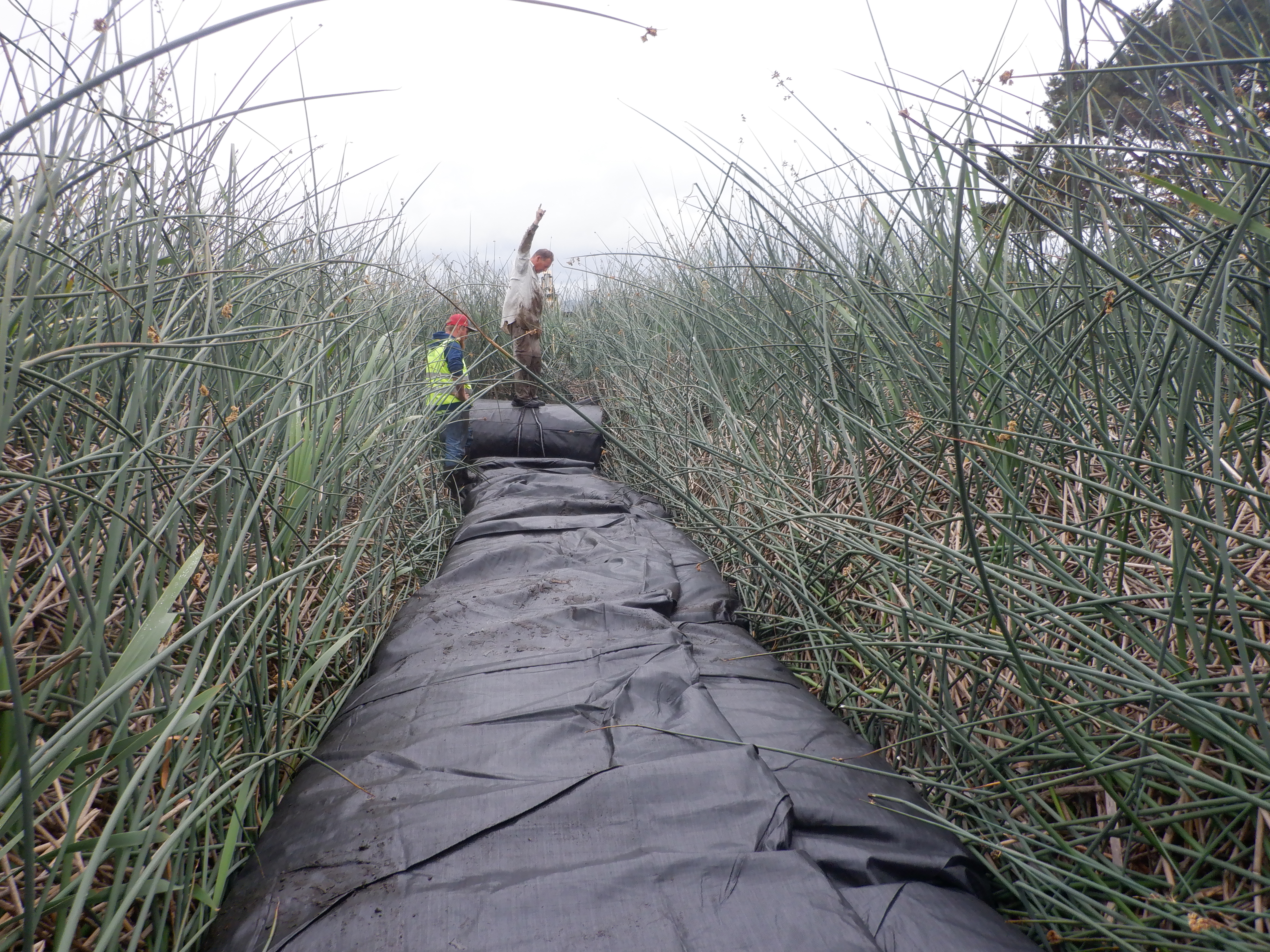
With the excavator's assistance, the roll was pulled directly into position with minimal resistance.
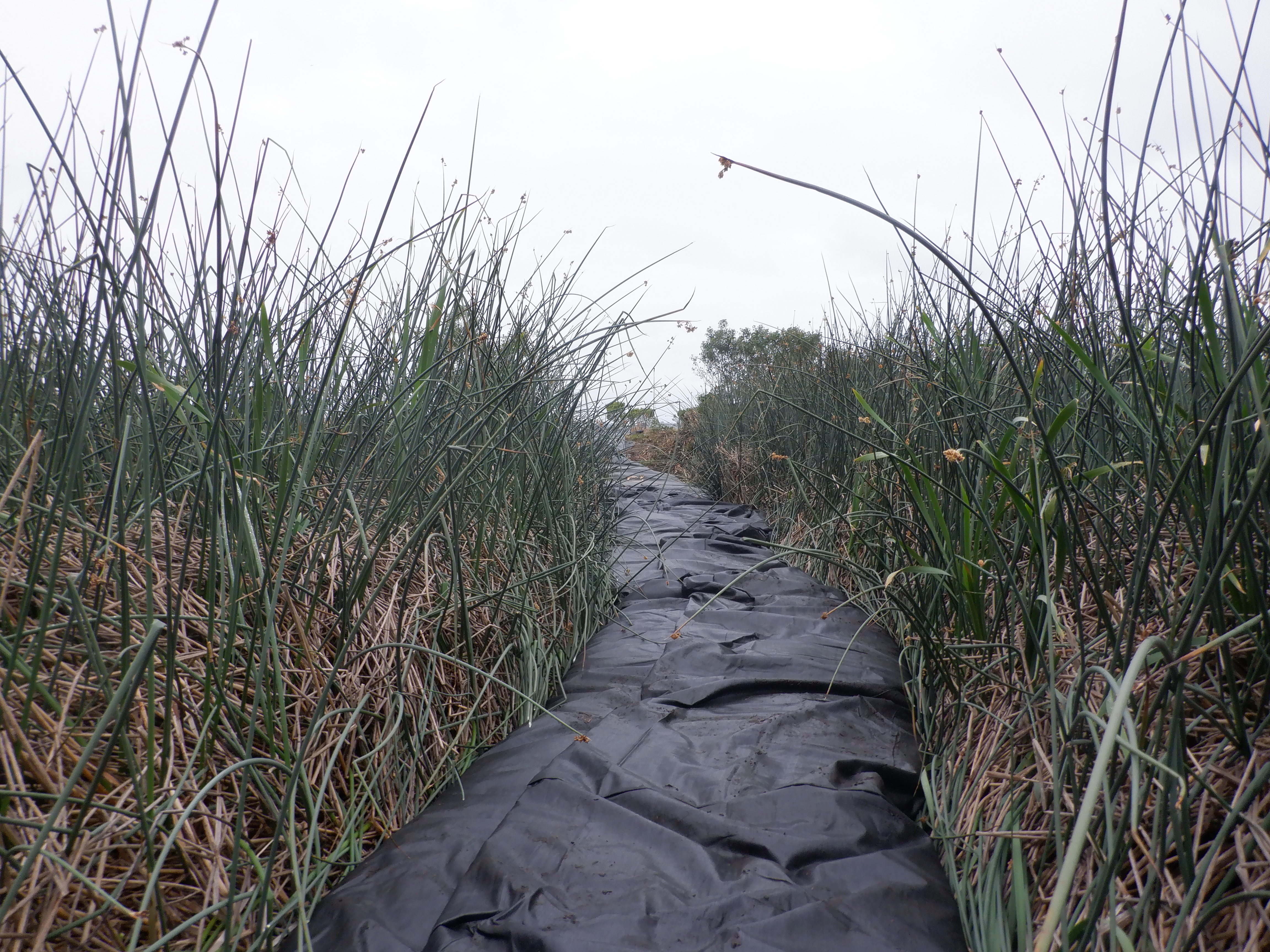
The pumps and water trucks couldn't keep pace with the excavator's efficiency in unrolling the AquaDam®.
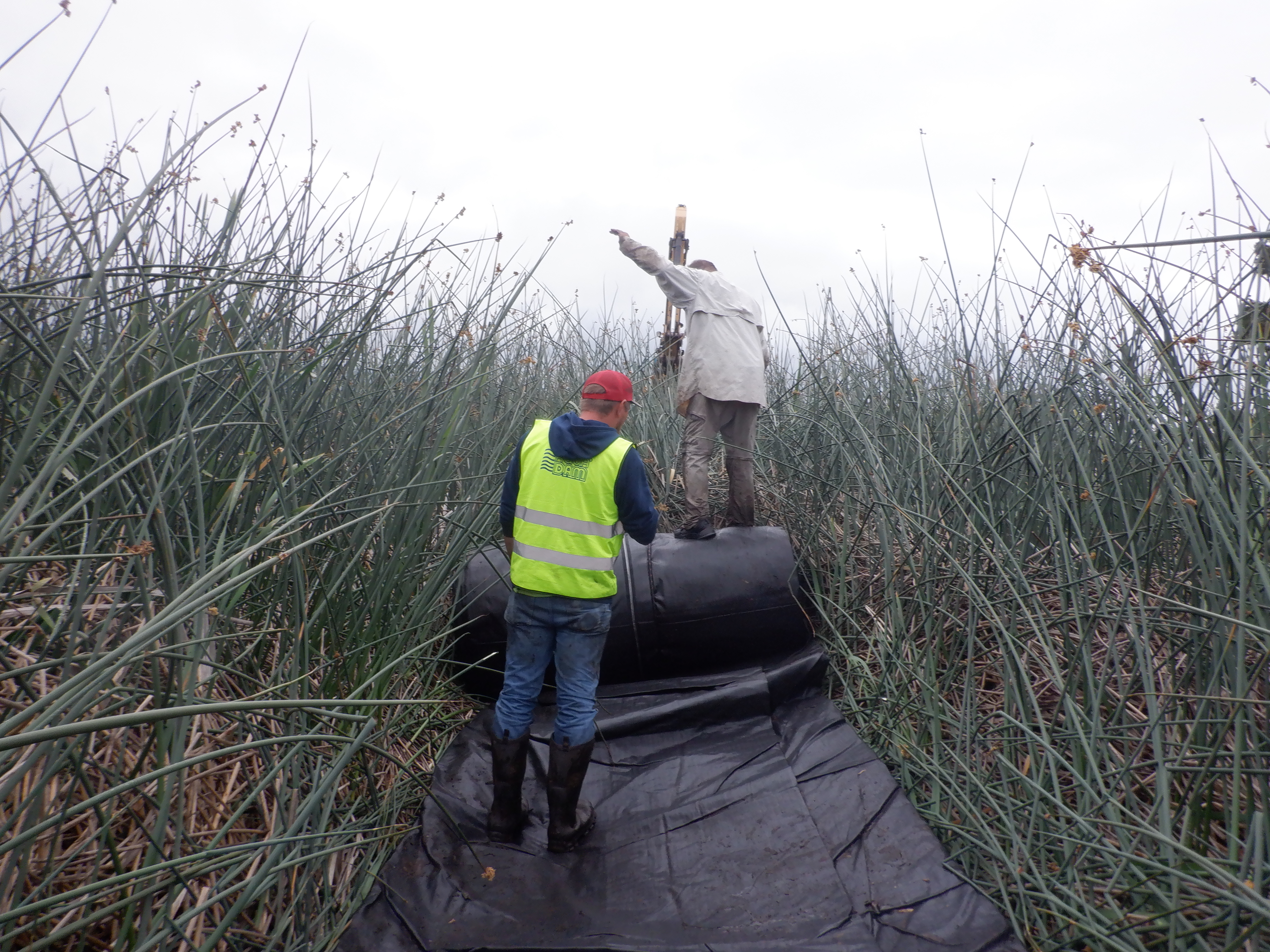
Due to limited available space, the excavator utilized its arm to pull the rope attached to the AquaDam® roll.
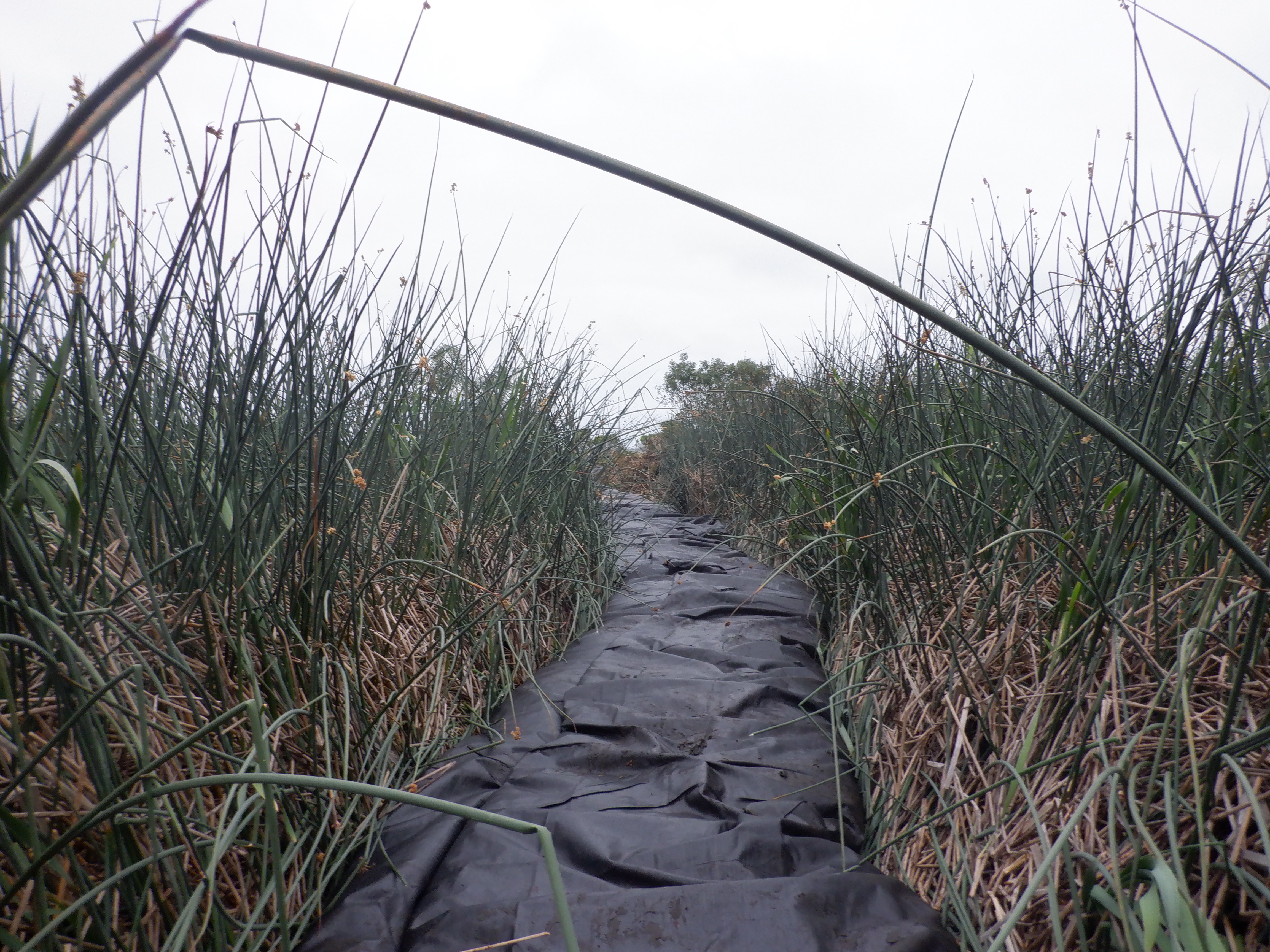
As water fills the AquaDam, its sides will fold outward, transforming the body into a more solid platform.
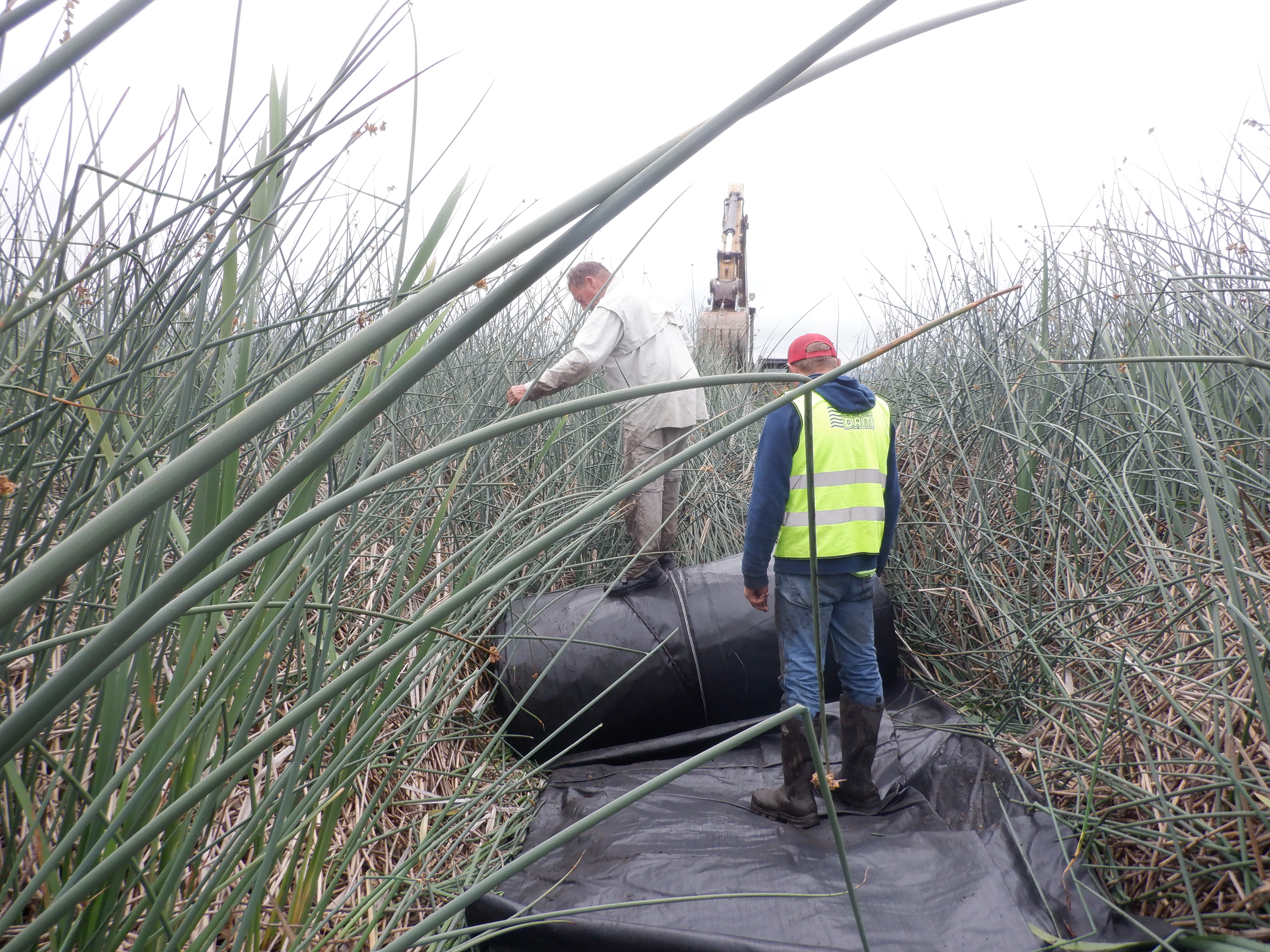
At least one worker remained positioned atop the roll to provide additional weight and stability while the excavator was pulling.
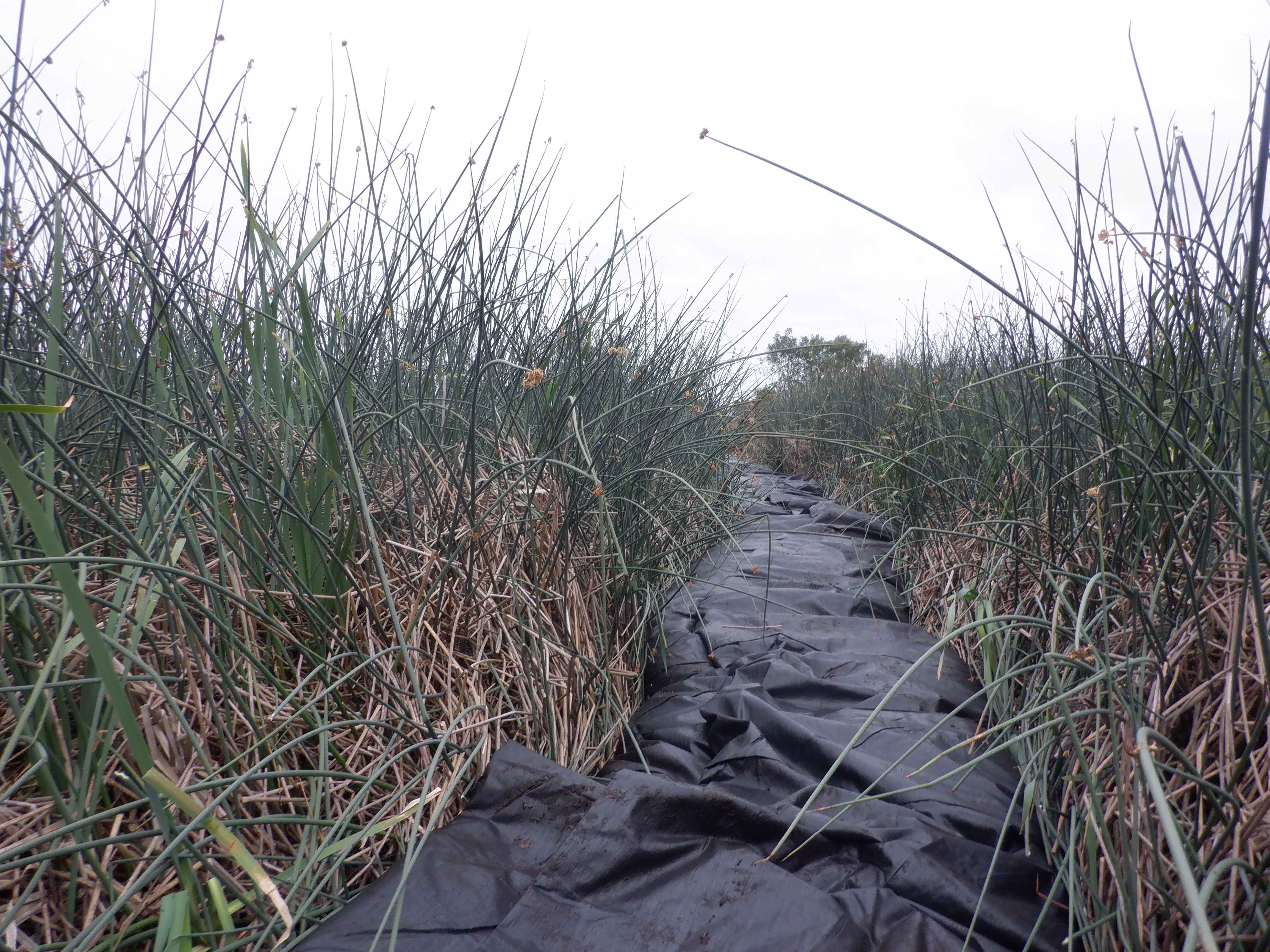
As the AquaDam fills with water, you can indeed start to see the sides unfold, a sign that the body is becoming a more stable platform.
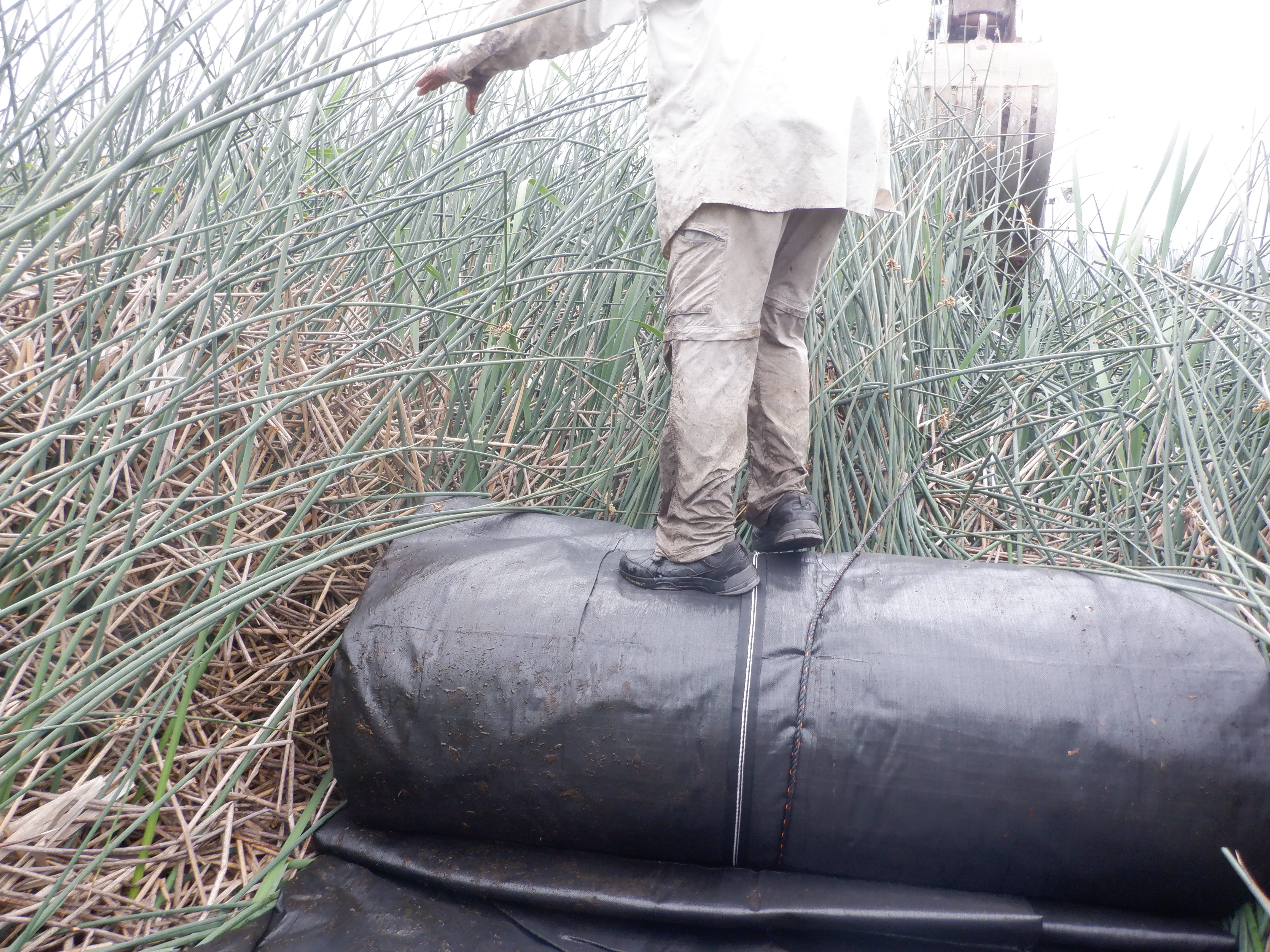
As the excavator pulled the roll through the tule vegetation, the AquaDam® settled directly on top of the tules, firmly seating itself in the intended location.
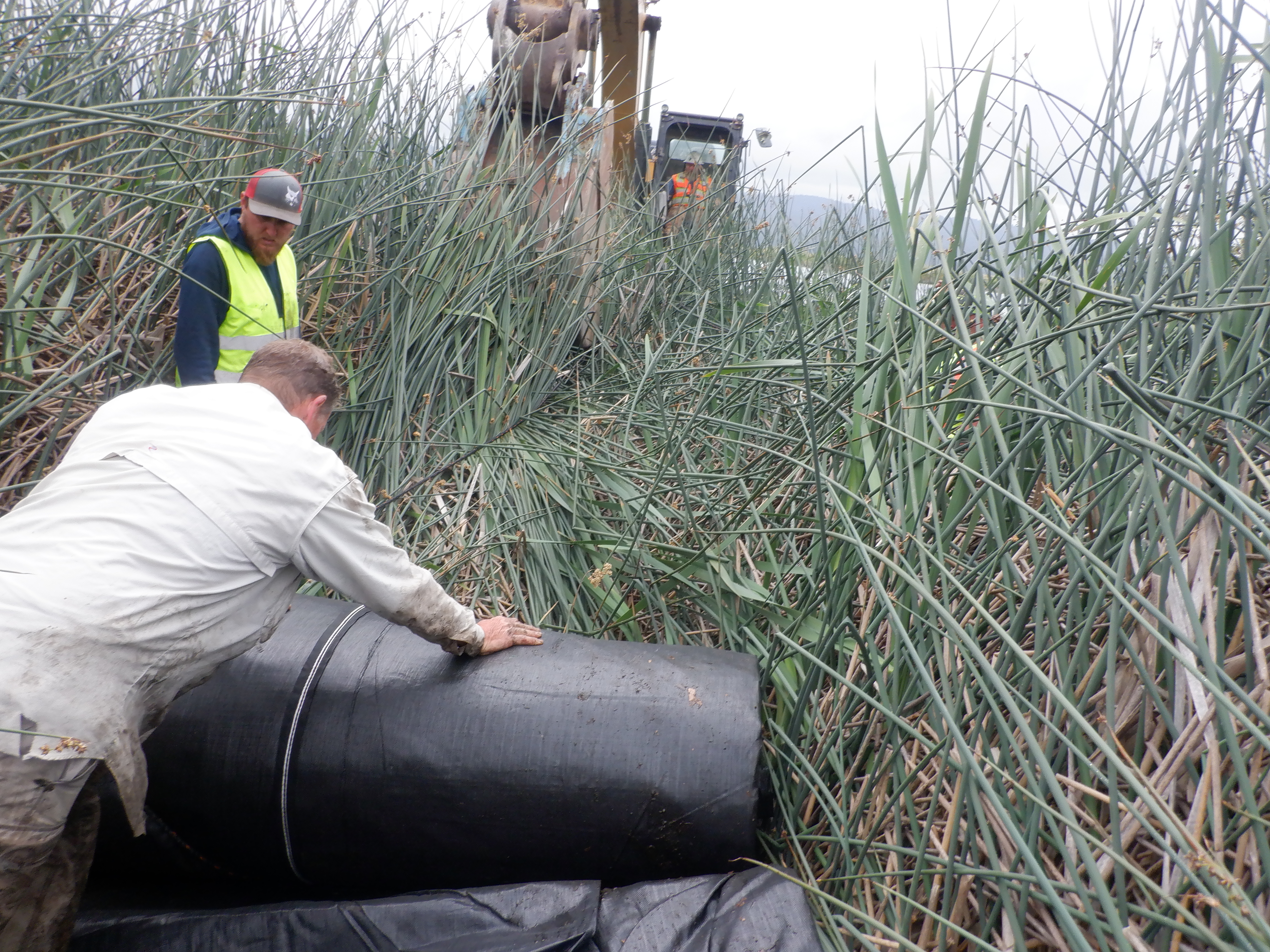
The excavator significantly accelerated the deployment process, alleviating the intense physical effort that manual pushing required from the workers.
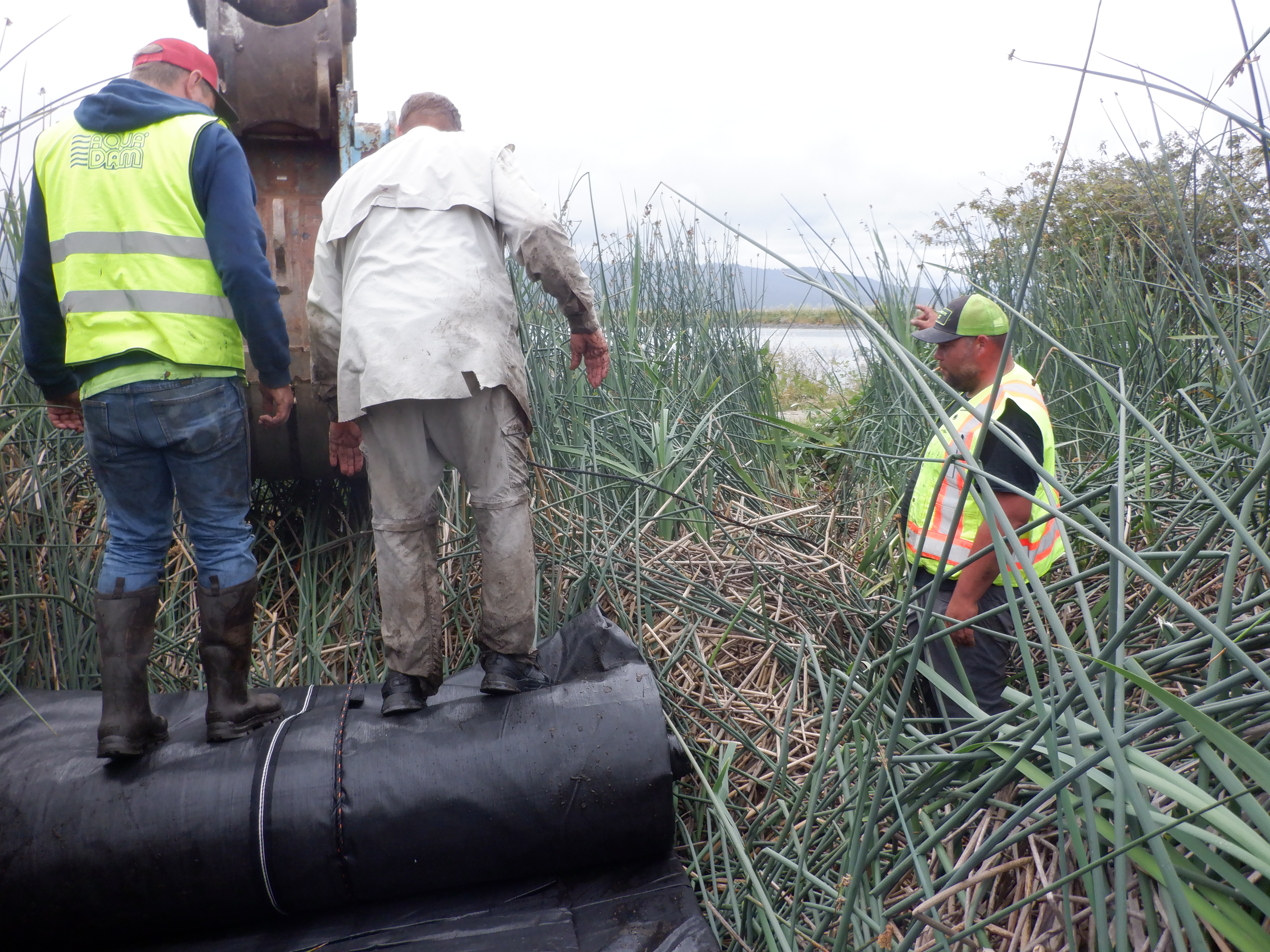
The excavator has nearly completed pulling the roll across the marsh.
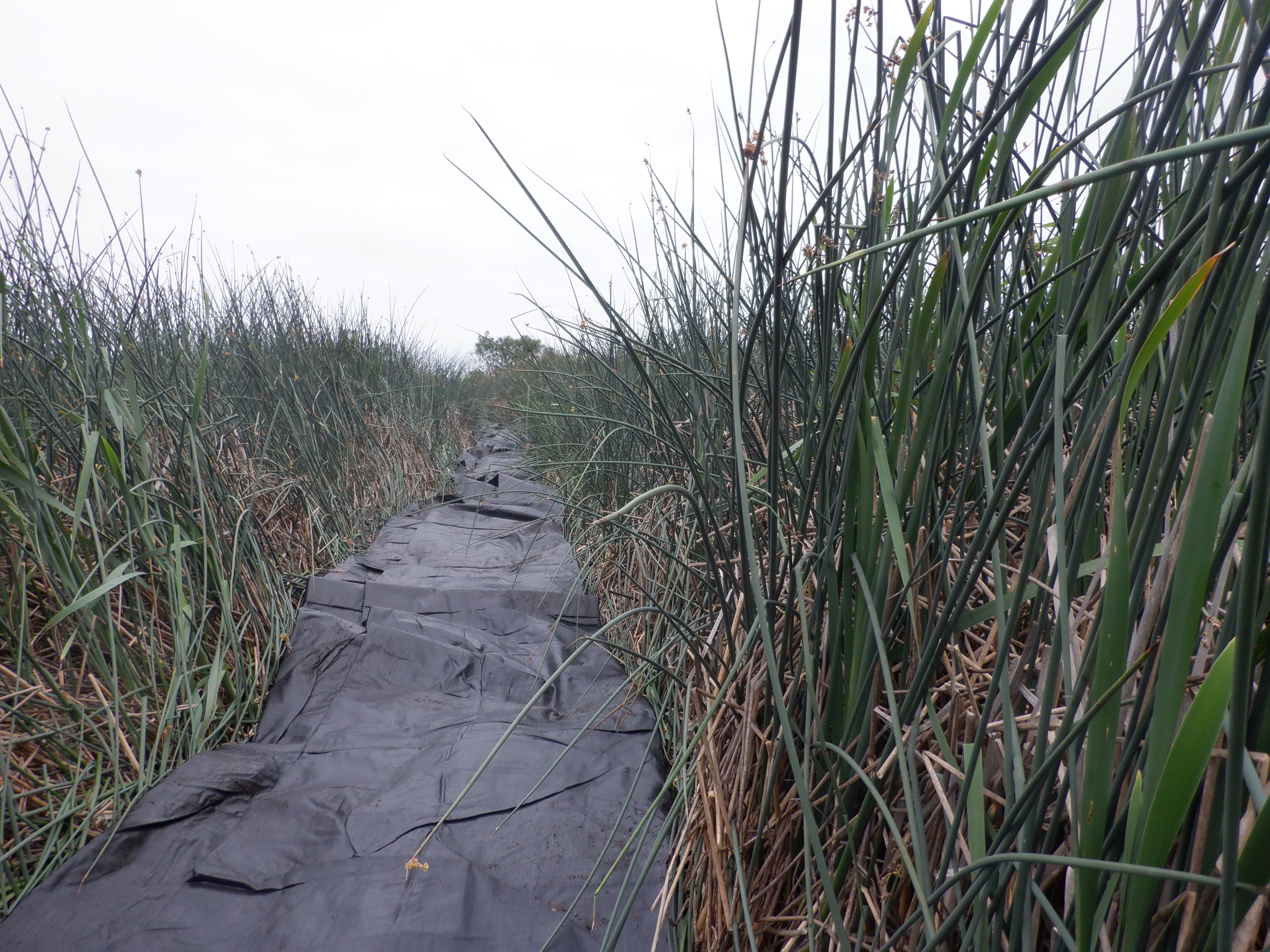
The roll remains positioned more than one hundred feet ahead of the water filling the unit.
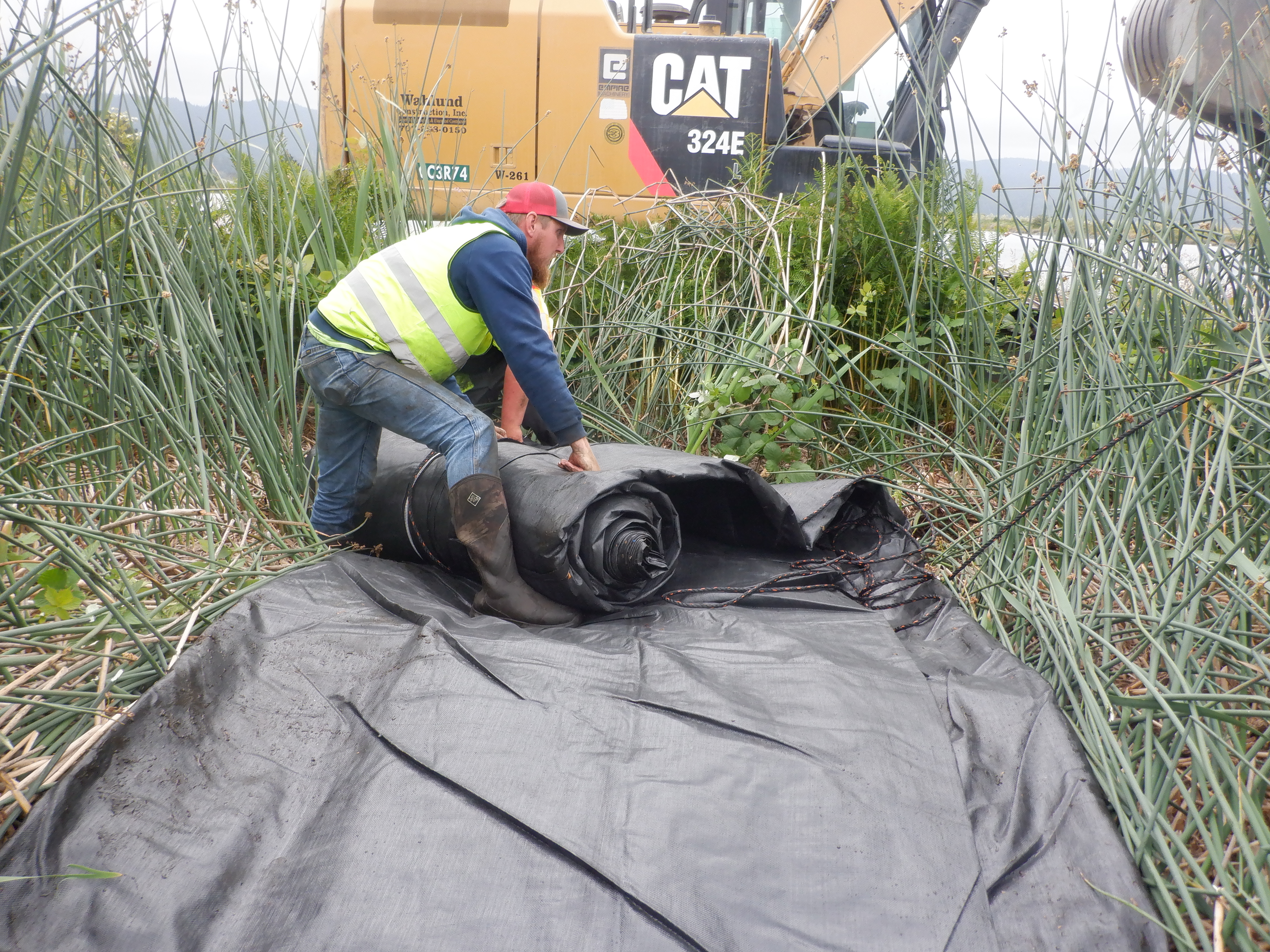
The roll extended approximately 20ft too far, so workers executed a turn at the end. This prevented the AquaDam from encroaching upon the path where the excavator was positioned.
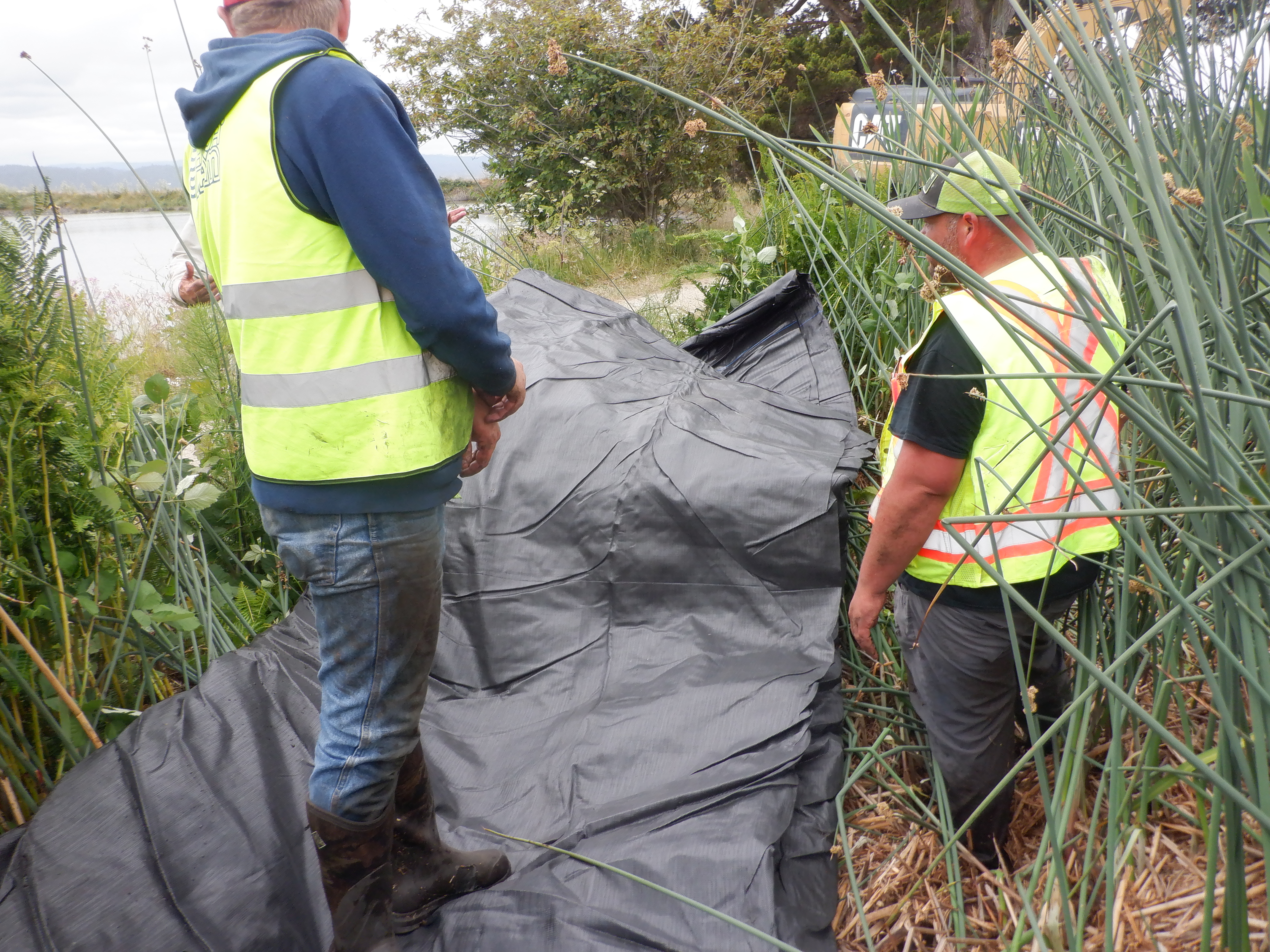
With the AquaDam® fully unrolled, workers now focus on completing the filling process.
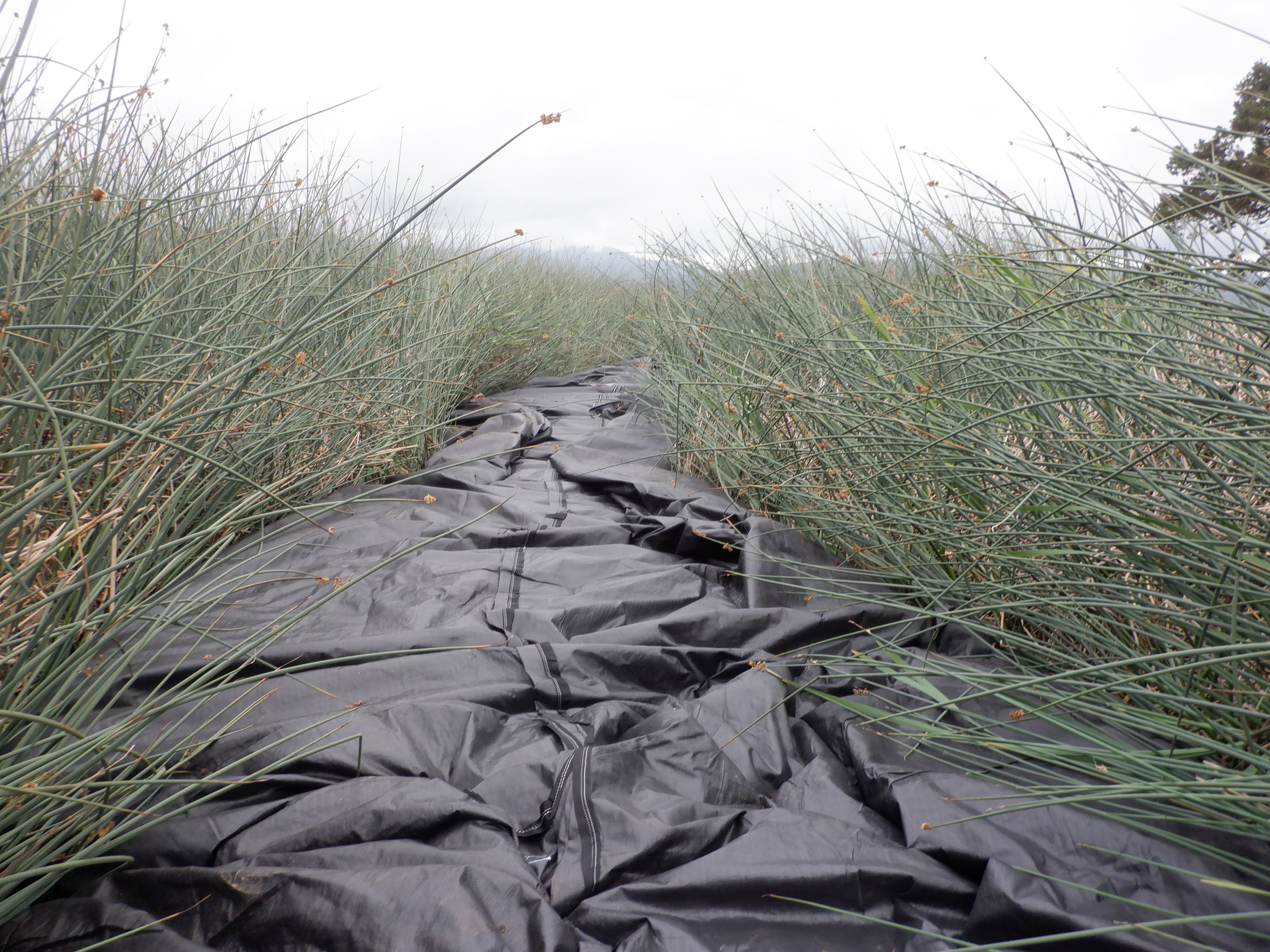
Here, the sides of the AquaDam® are beginning to unfold as water continues to fill the unit. The wider sections correspond to deeper depressions where the dam has been positioned.
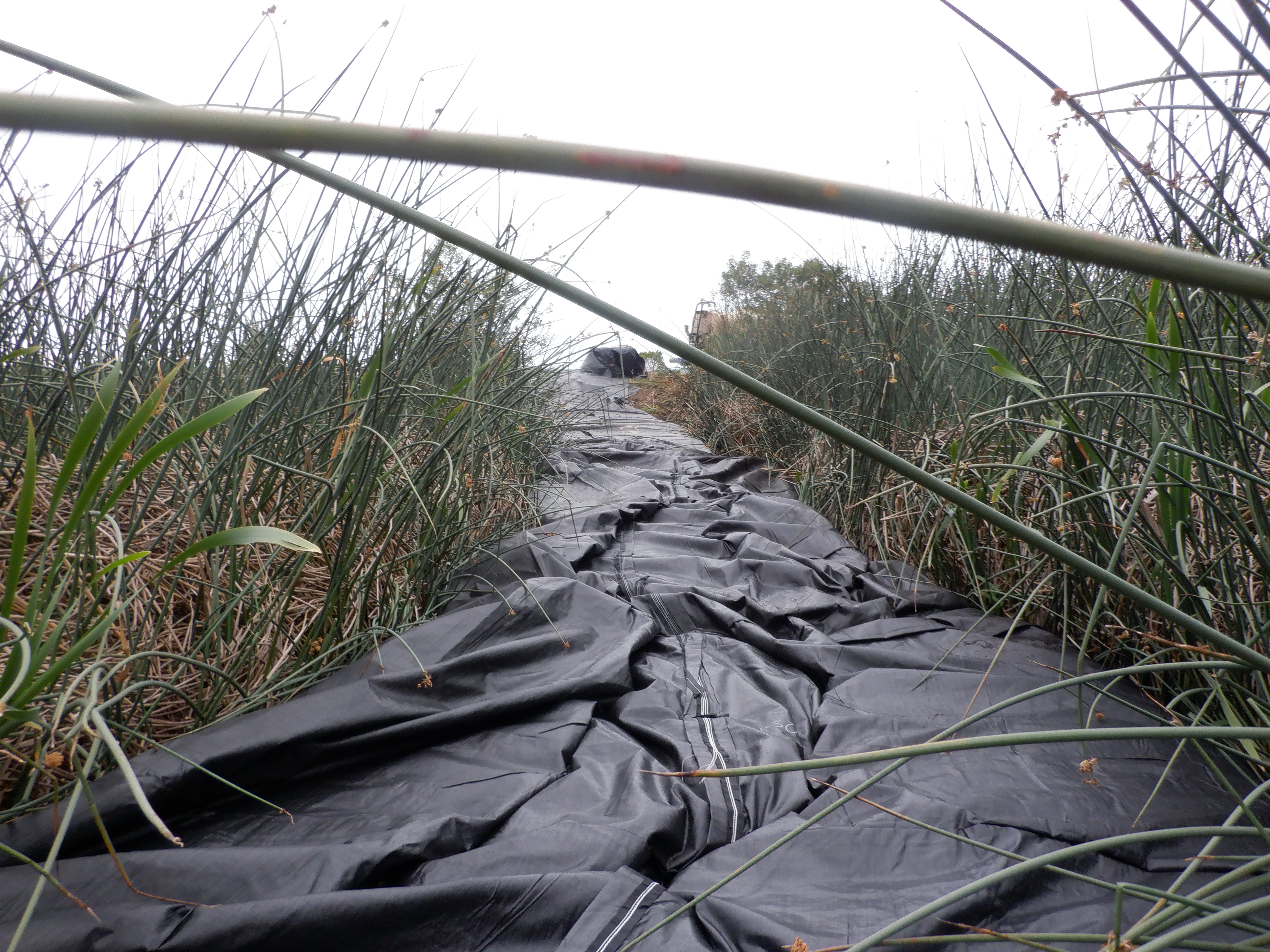
A view looking back at the starting bank as the 5ft tall SCE AquaDam® continues to fill.
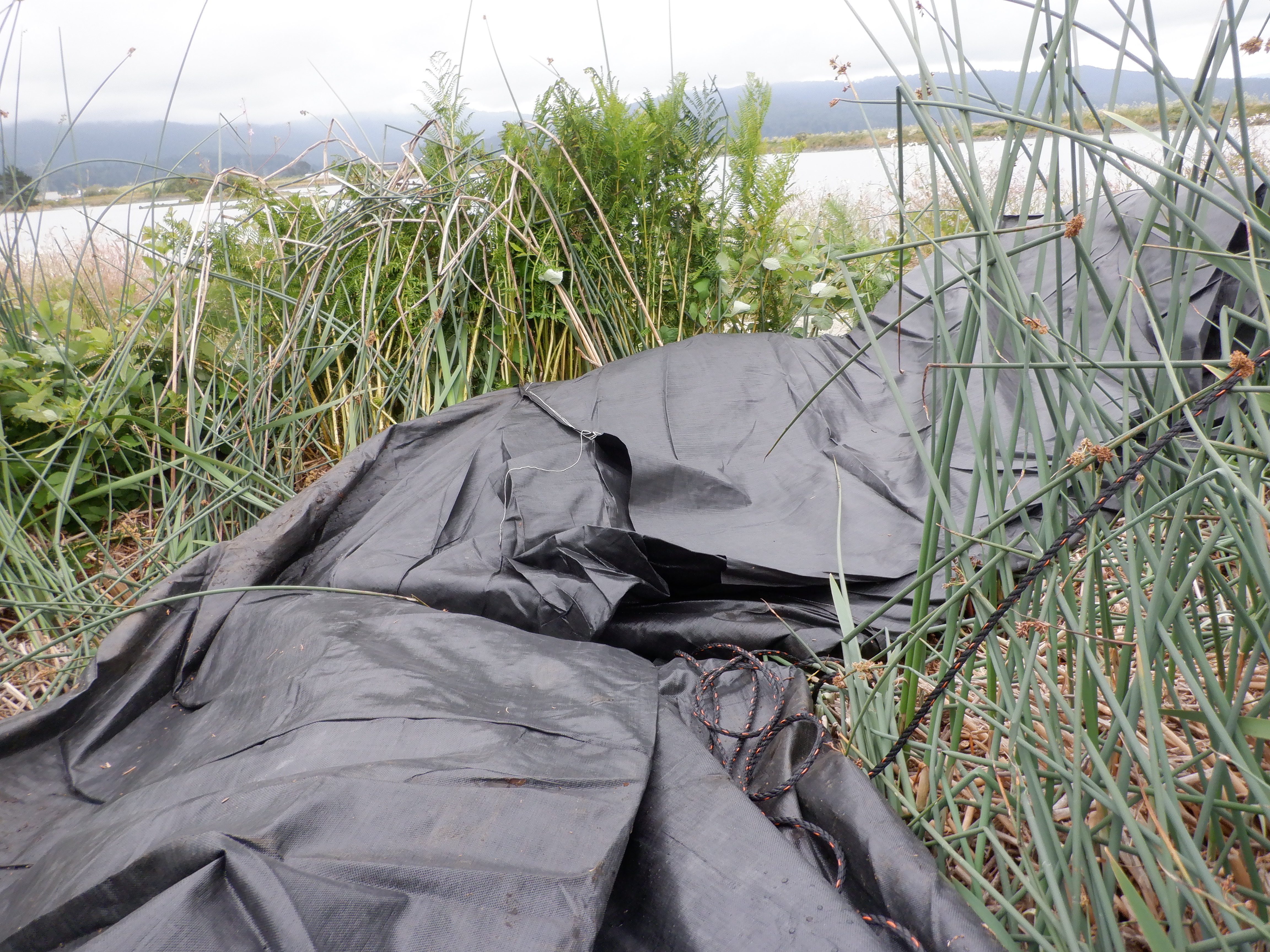
The ending bank of the AquaDam® is visible here. Note the pleat in the material on the right side; workers created this feature to facilitate the turn in the dam’s alignment.
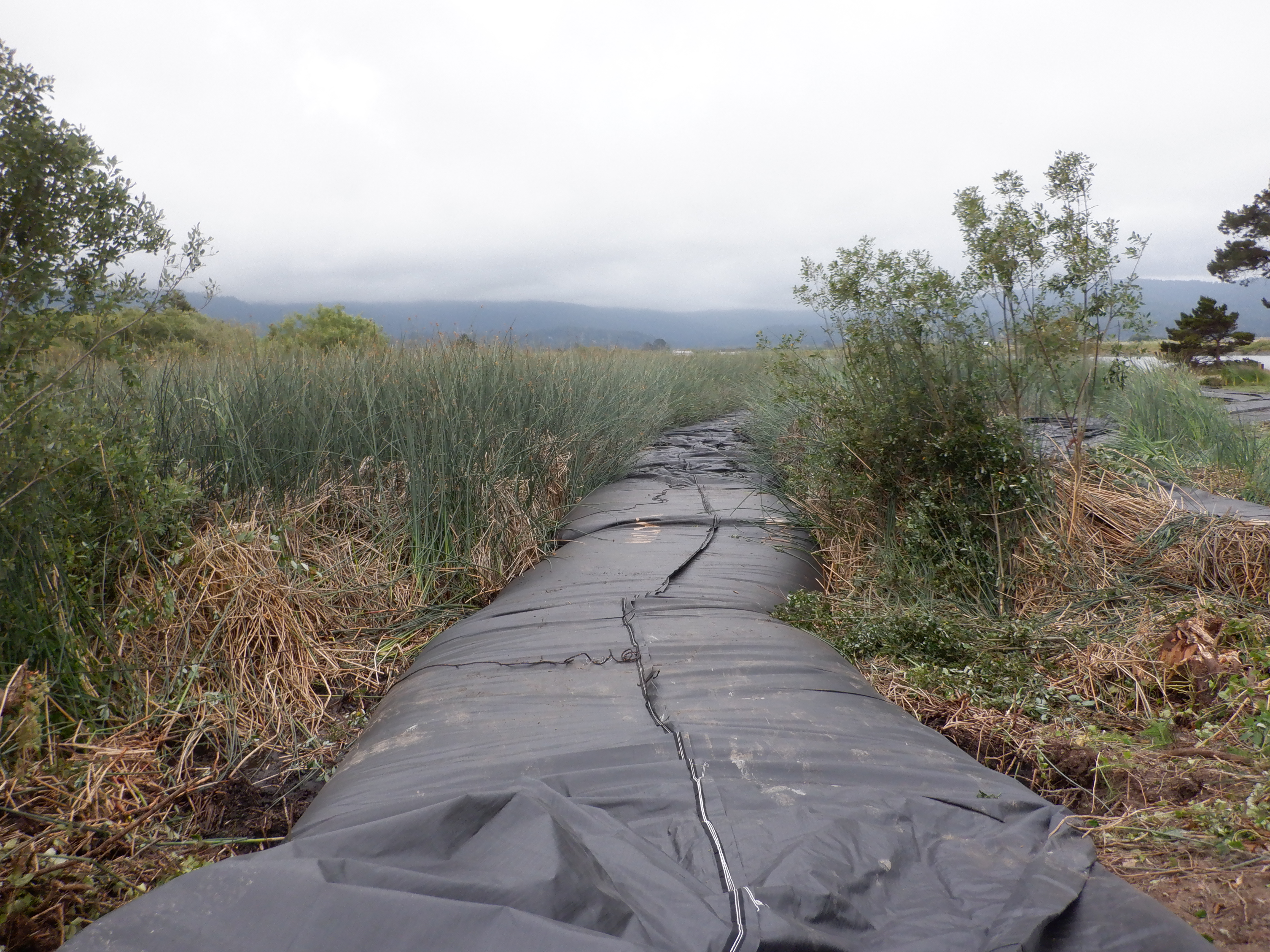
As the AquaDam fills, the unit rises, widens, and begins to settle onto the bed of the water system.
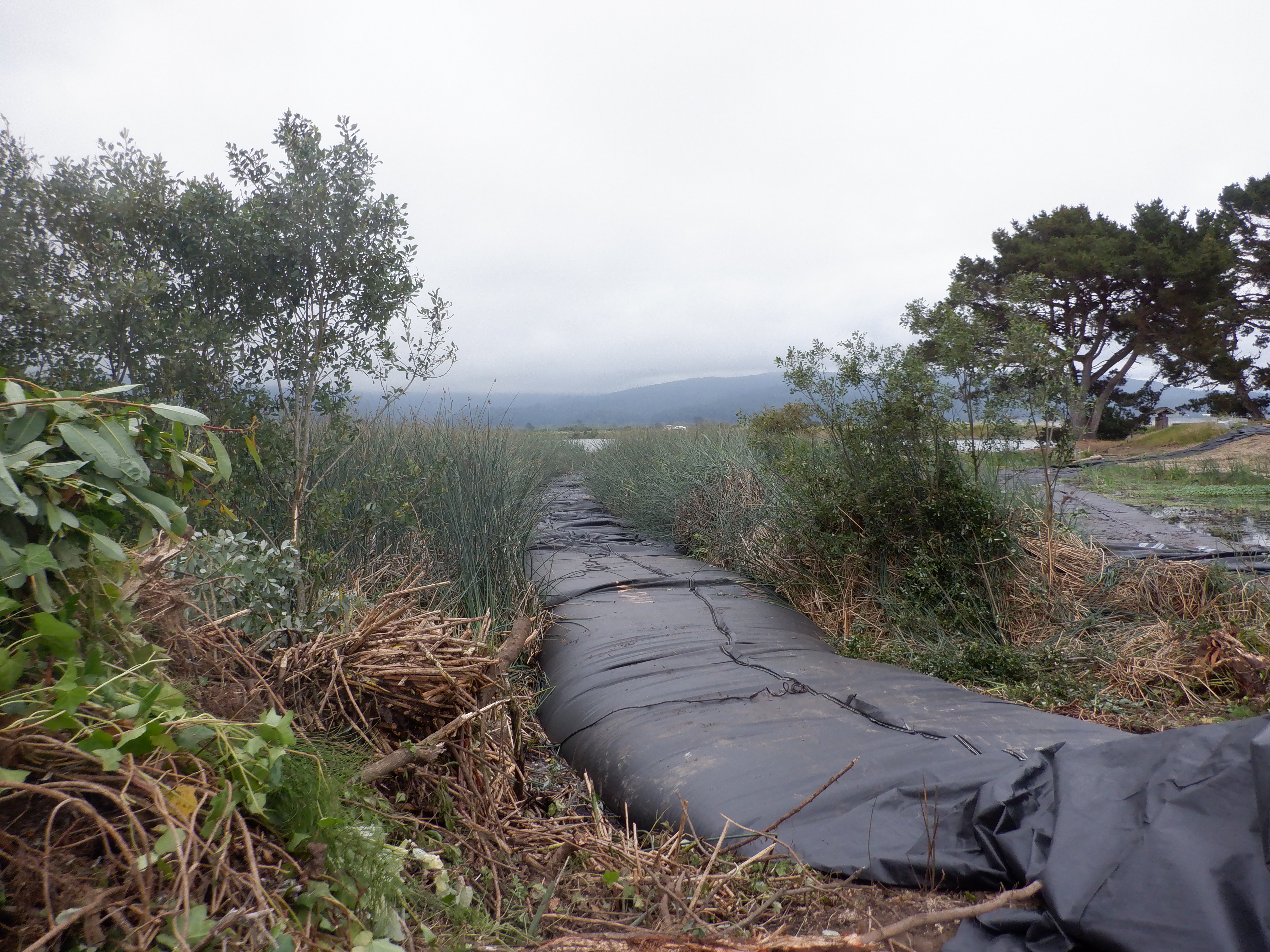
The path is becoming clearer as the AquaDam® fills with water.
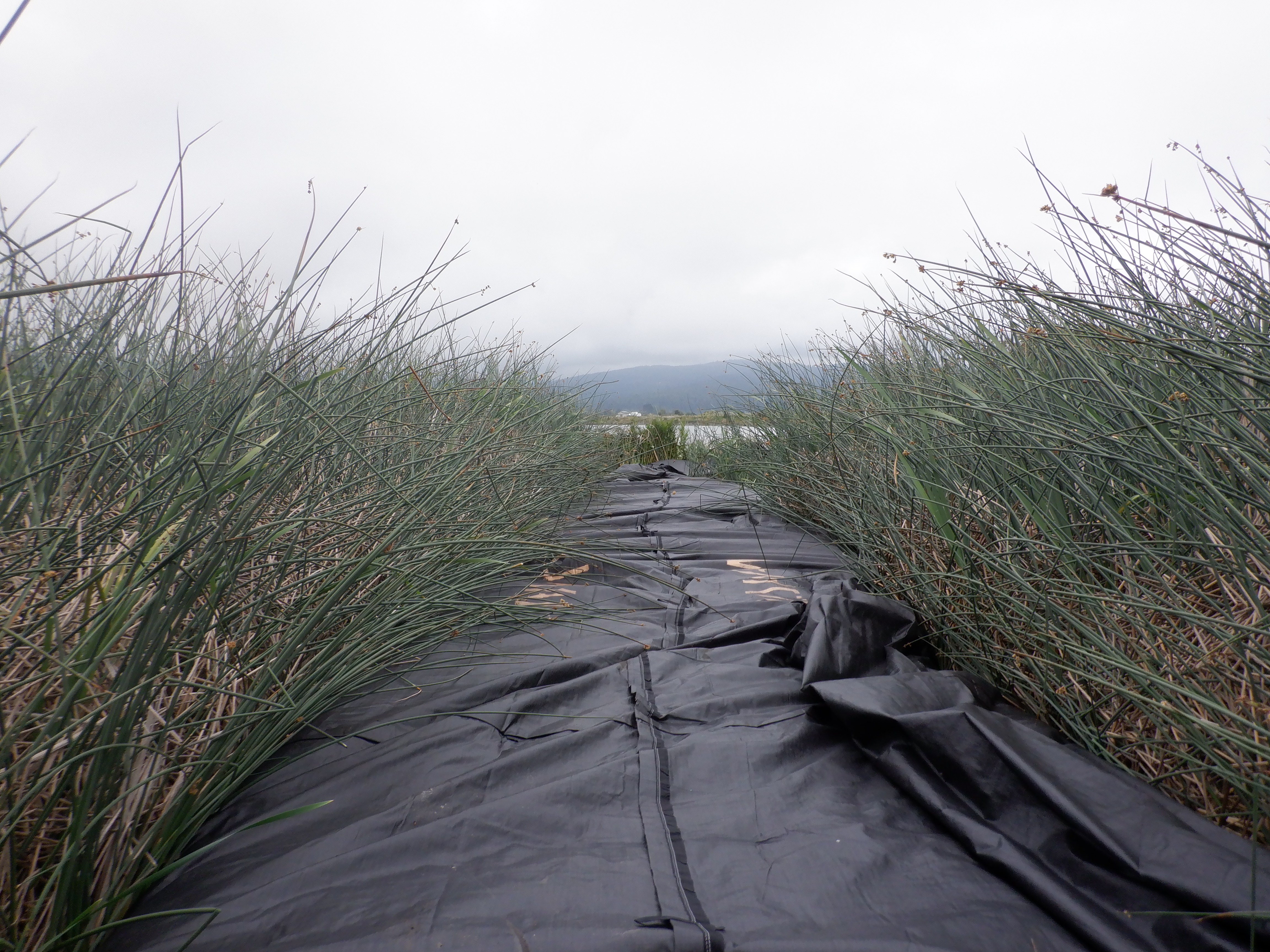
The water being pumped inside has nearly reached the end of the 280ft long SCE AquaDam®.
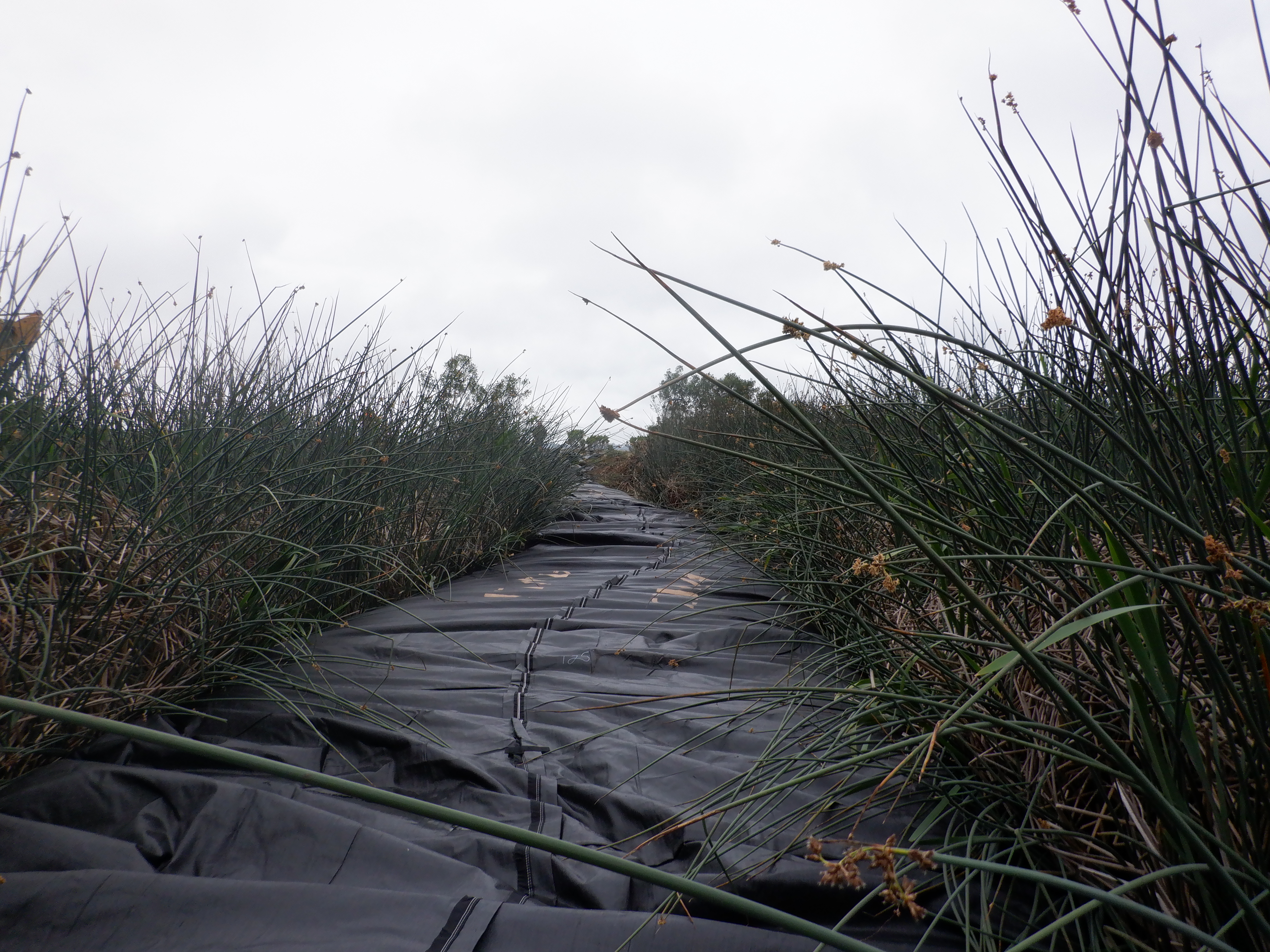
The sides have now fully unfolded, and the wrinkles are beginning to disappear.
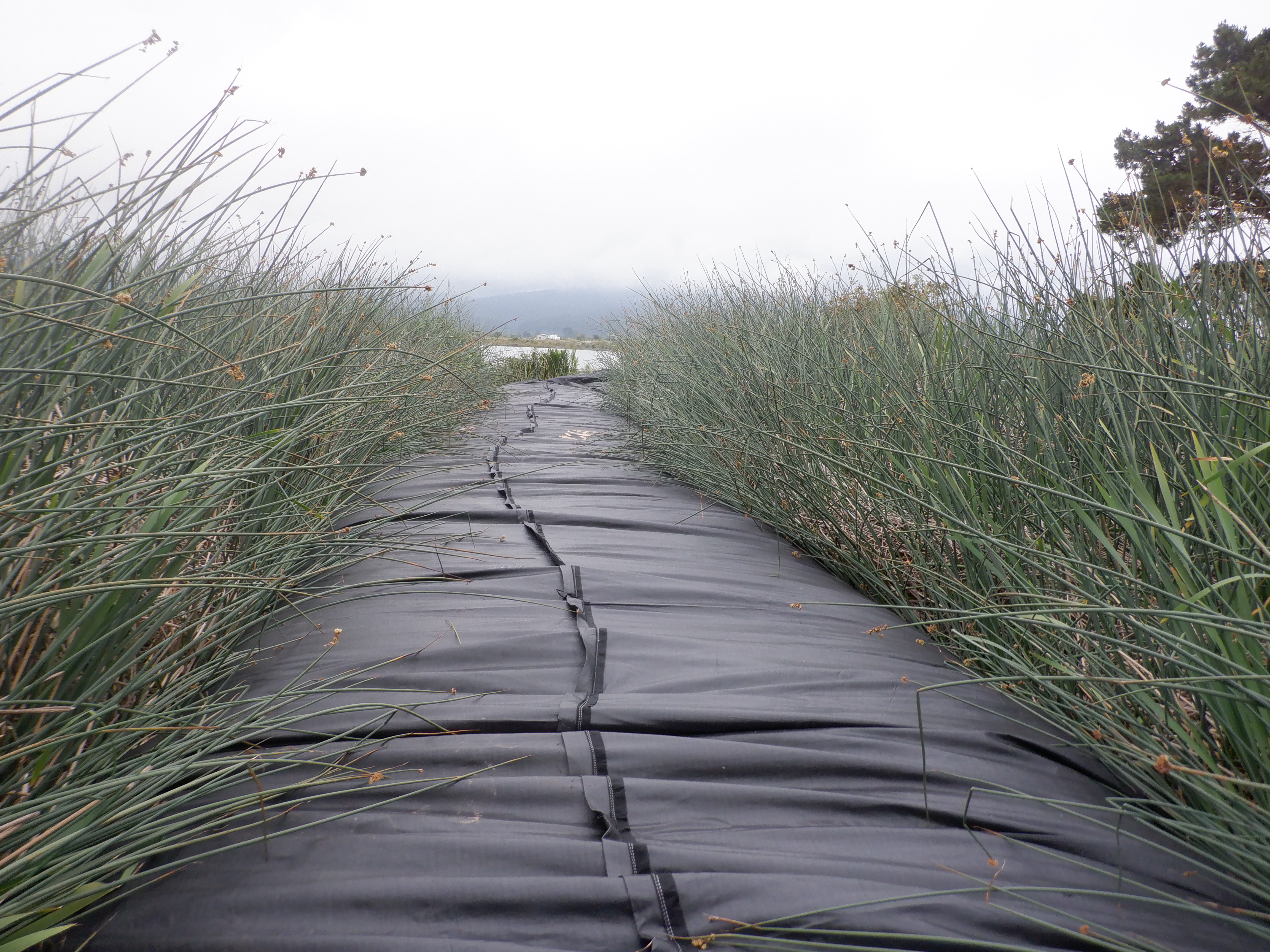
The 5ft tall SCE AquaDam® now maintains a water head above the surrounding body of water, while the floating mat of tules below the dam rests firmly on the marsh bed.
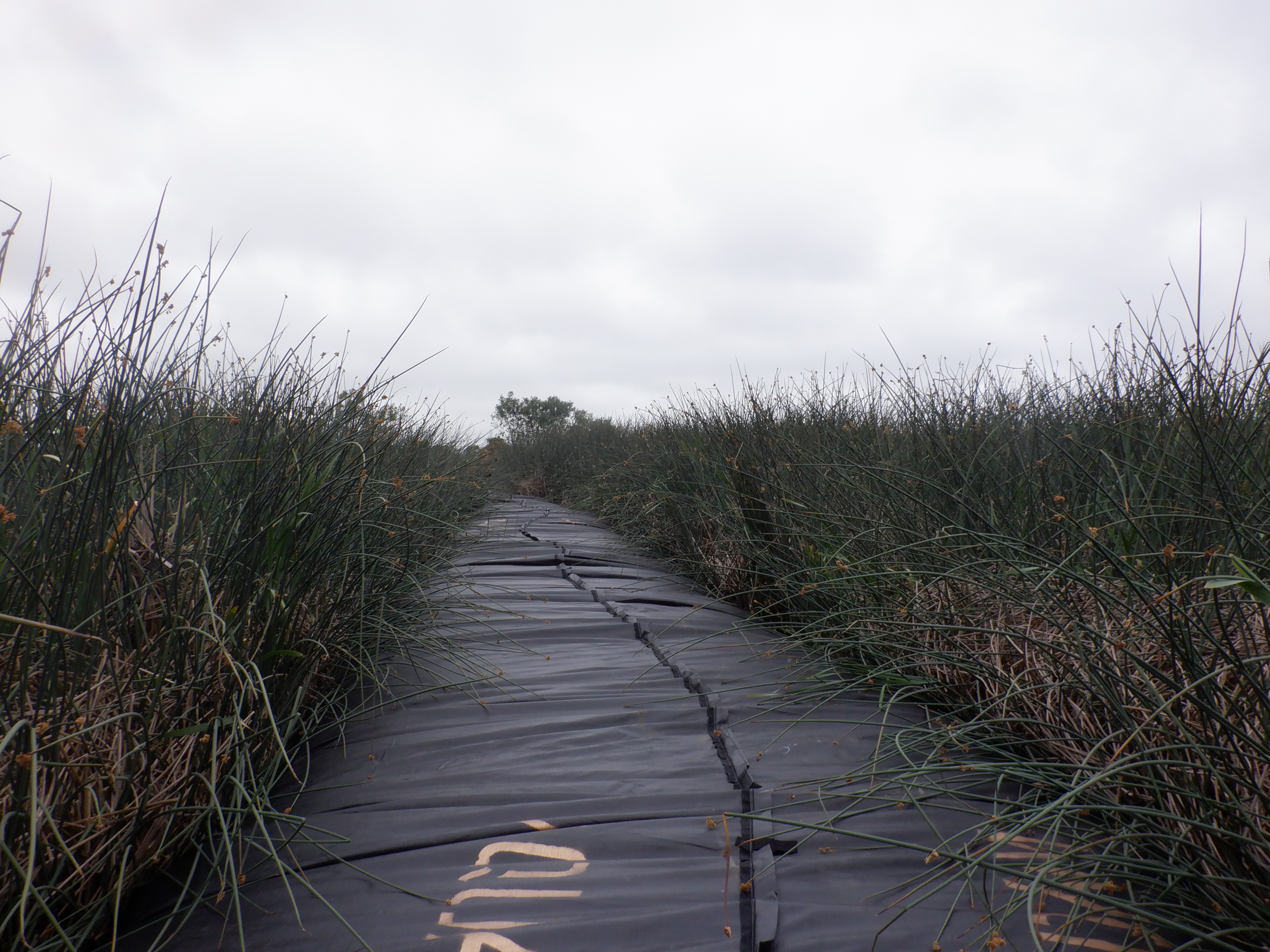
The AquaDam® smoothly passed over and displaced the tule vegetation without causing damage. The root system of the tules remained intact throughout the project.
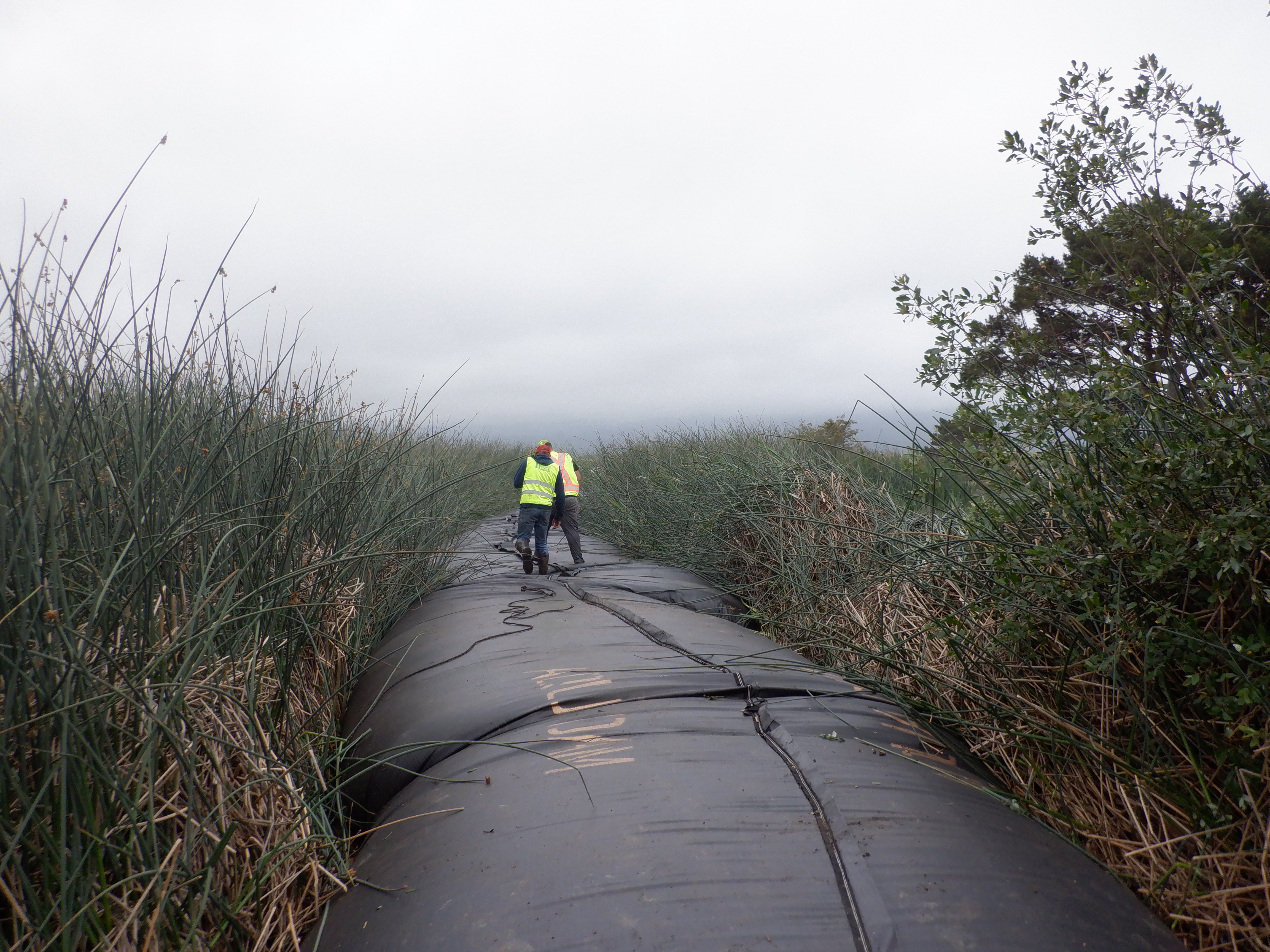
As the 5ft tall AquaDam® nears full capacity, the unit transforms into a stable, solid platform.
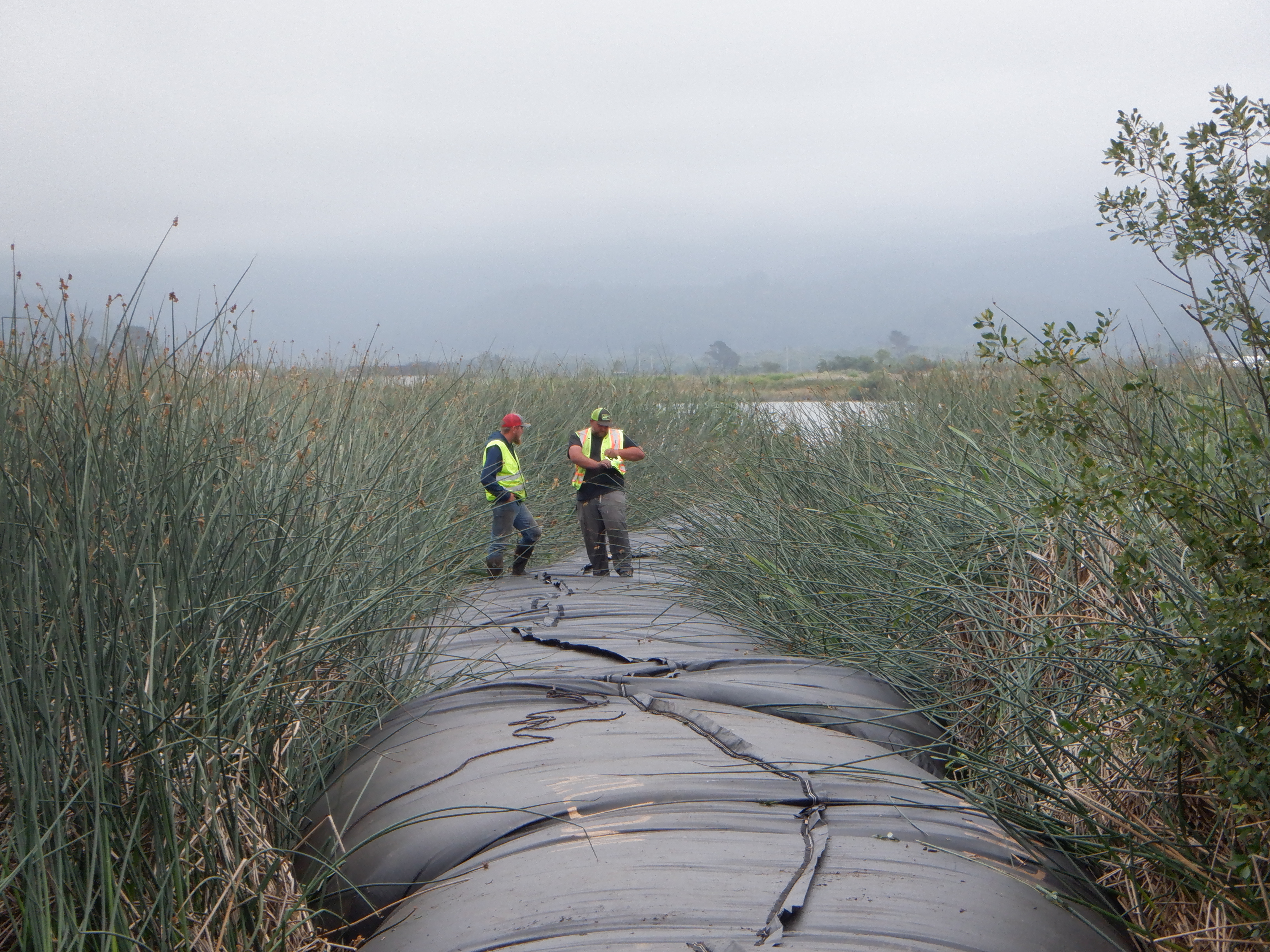
As the 5ft tall AquaDam® nears full capacity, the unit transforms into a stable, solid platform.
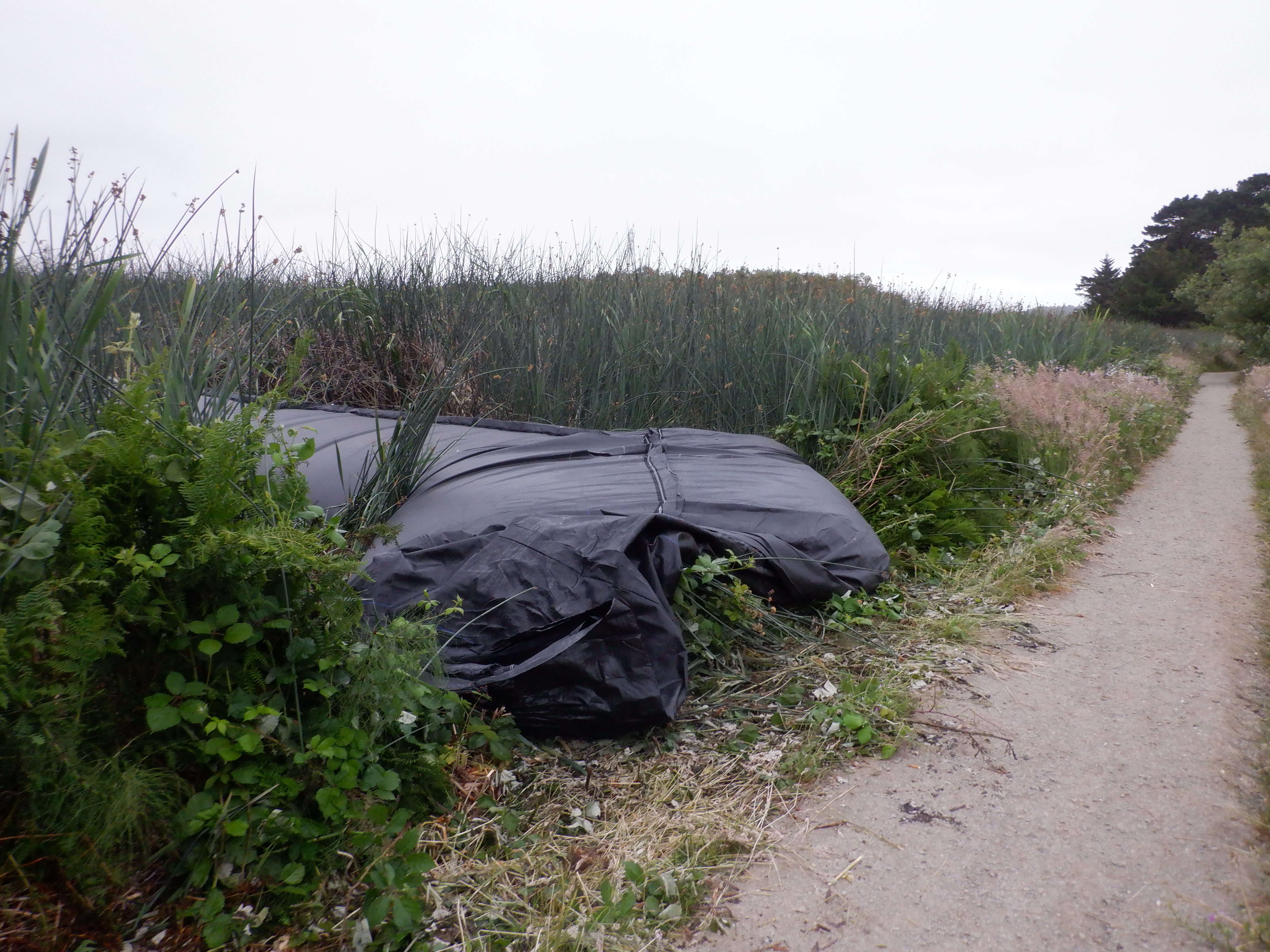
Shown here is the closed end of the 5ft tall SCE AquaDam®, which was turned to avoid crossing the trail. The extra material visible at the end is a connection collar; however, it was not utilized in this project.
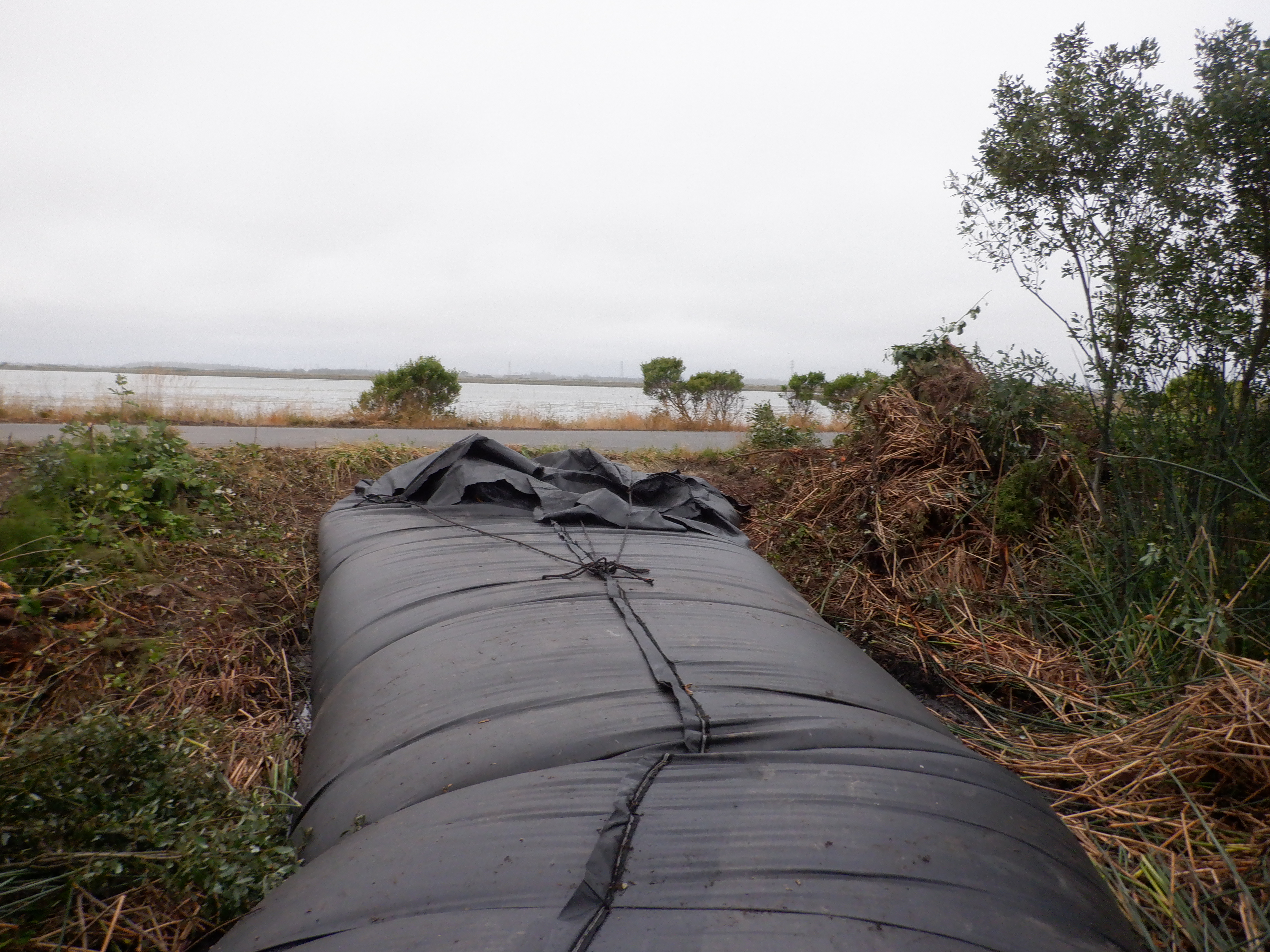
After the 5ft tall SCE AquaDam® was fully filled, workers securely tied off the open end and fill-tubes to prevent any water from escaping.
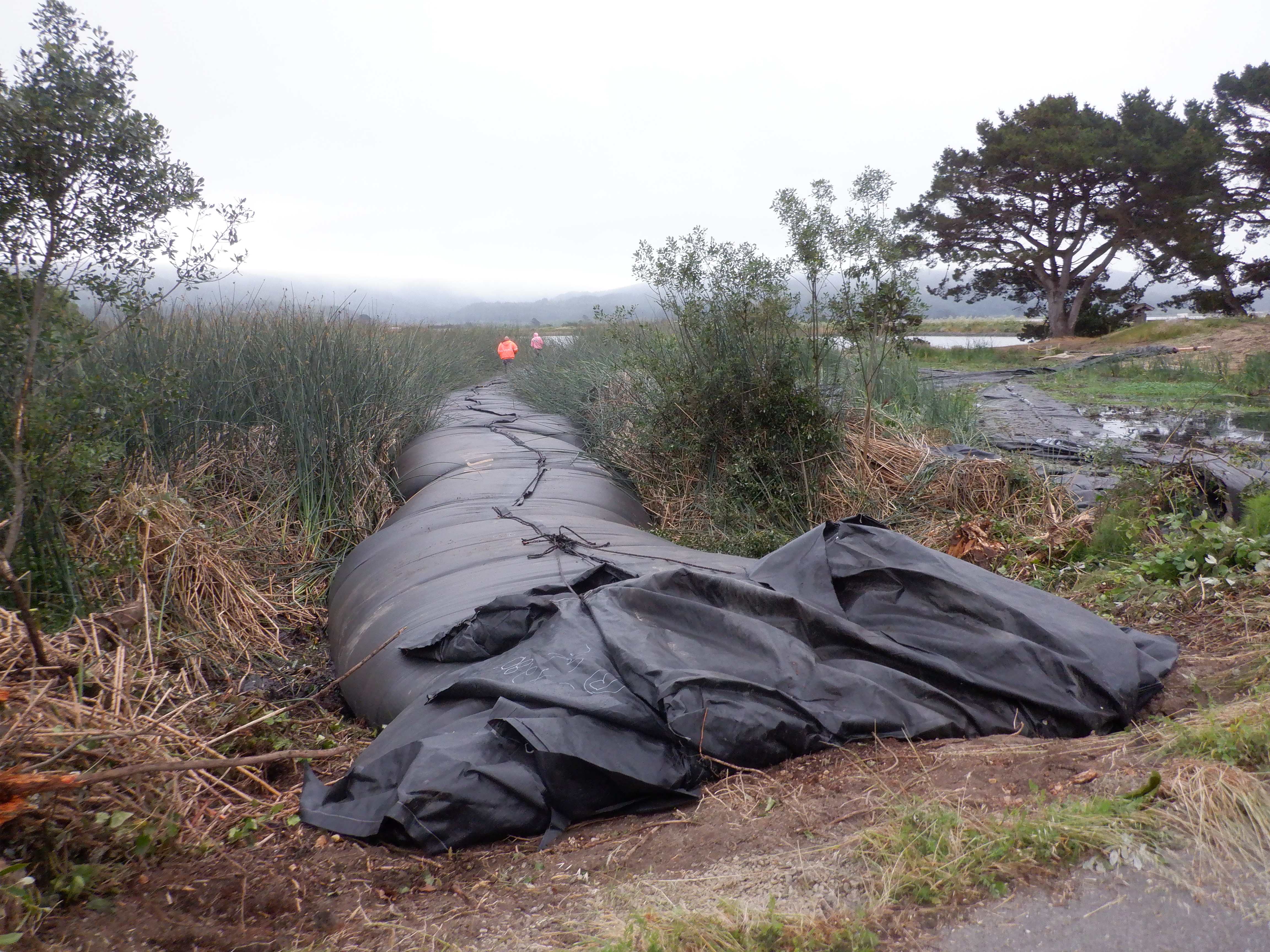
The North and South sections of Hauser Marsh have been successfully isolated.
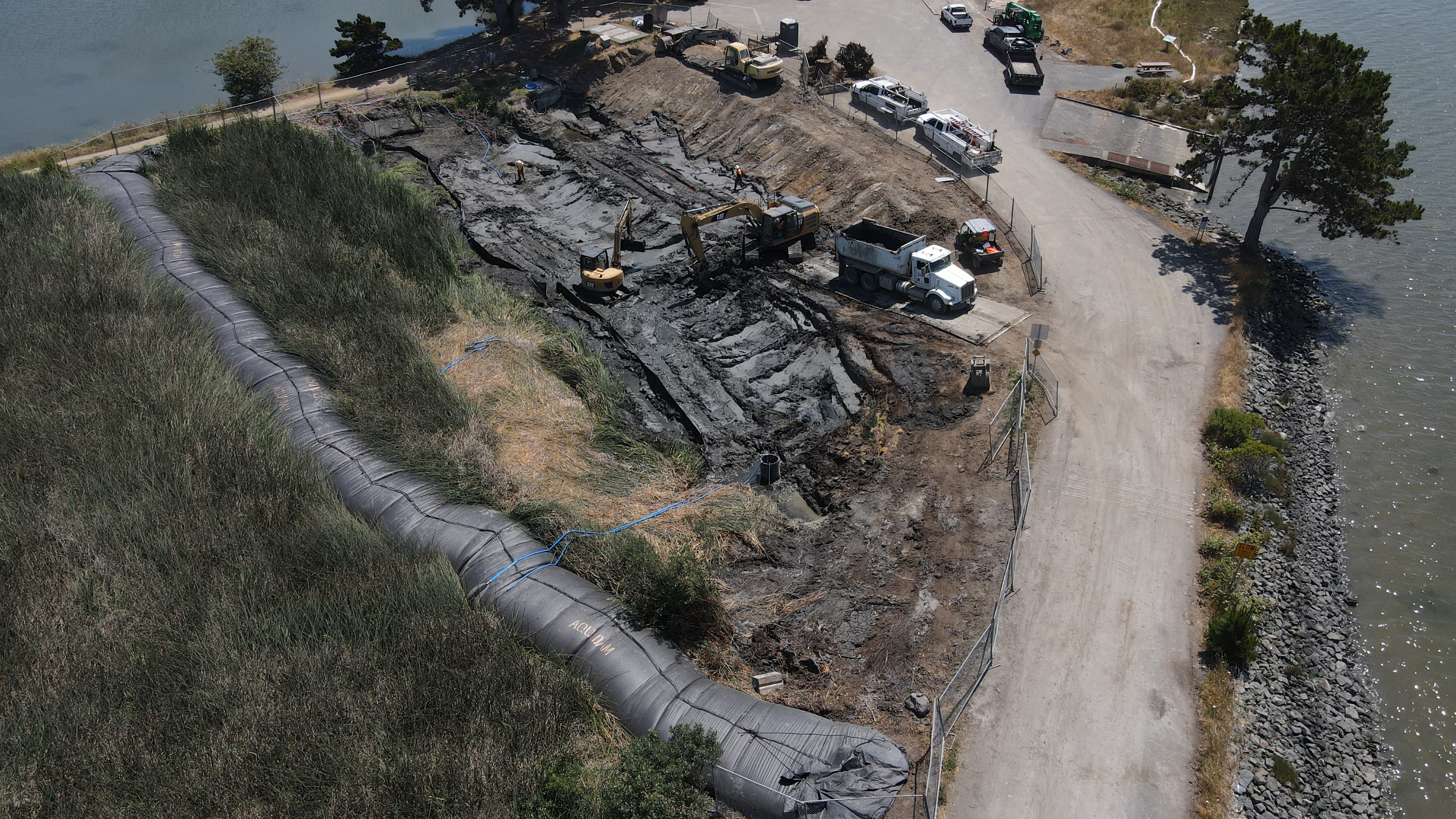
Fantastic job AquaDam®!
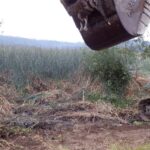

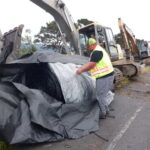
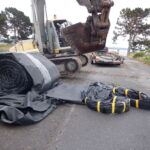
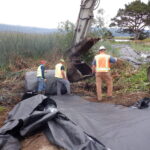

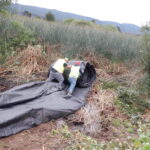
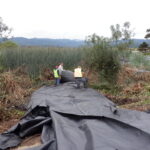
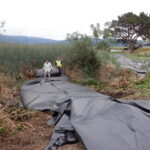
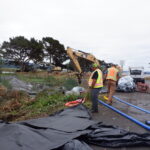
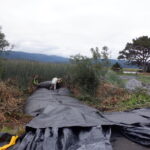
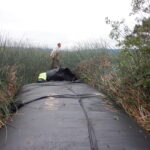
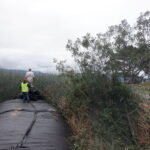
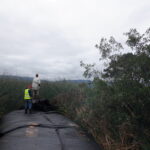
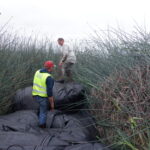
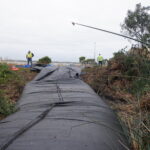
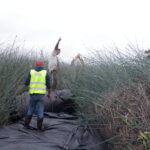
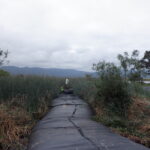
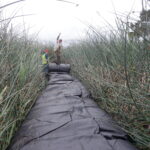
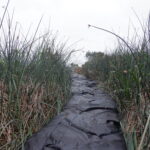
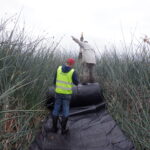
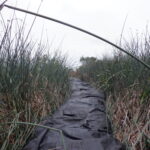
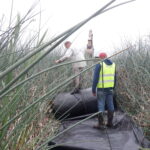
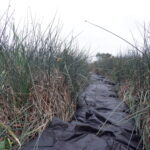
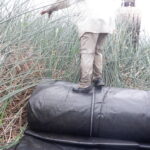
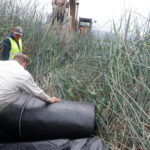
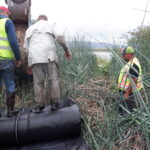

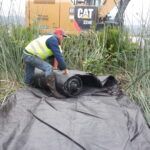
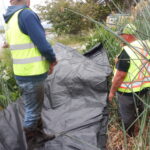

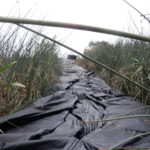
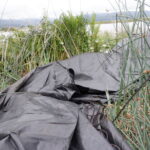
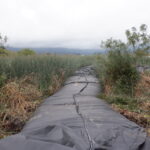
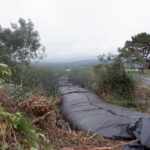
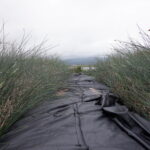
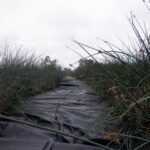
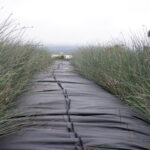
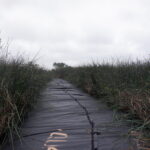
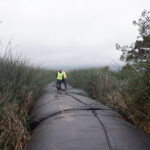
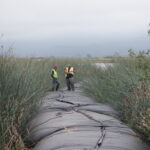

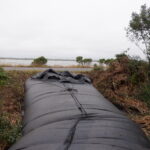
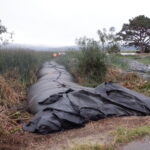

5ft Tall 11ft Wide (fully filled) 280ft Long Single Closed End (SCE) AquaDam®, Arcata Wastewater Treatment Plant, Arcata Marsh & Wildlife Sanctuary, Hauser Marsh, Enhancement Wetlands, Tidal Influence, Water Truck Fill, Line Configuration.
